

| Peace Monuments
for Baroness Bertha von Suttner |
Bertha Felicitas Sophie Freifrau von Suttner (Baroness Bertha von Suttner) [1843-1914] was an Austrian novelist, radical (organizational) pacifist & the first woman to be a Nobel Peace Prize laureate.
See summary biographies at the end of this web page. | Click here for Alfred Hermann Fried. | Click here for international peace conferences.
Right click image to enlarge / Zum Vergrößern auf das Bild klicken.

 |
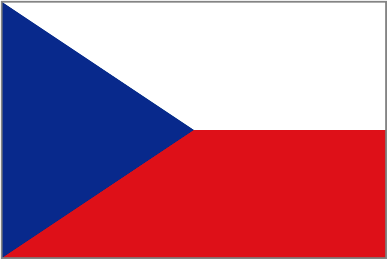 June 9, 1843 - Born in Prague, Bohemia, the daughter of an impoverished Austrian Field Marshal, Franz-Josef Graf Kinsky von Wchinitz und Tettau, and wife Sophie von Körner, and governess to the wealthy Suttner family from 1873. She had an older brother, Arthur Franz Graf Kinsky von Wchinitz und Tettau.
June 9, 1843 - Born in Prague, Bohemia, the daughter of an impoverished Austrian Field Marshal, Franz-Josef Graf Kinsky von Wchinitz und Tettau, and wife Sophie von Körner, and governess to the wealthy Suttner family from 1873. She had an older brother, Arthur Franz Graf Kinsky von Wchinitz und Tettau.
"Franz Josef Graf Kinsky von Wchinitz und Tettau was born on 6 December 1739 in Prague; he entered Austrian military service in 1759 and by 1769 was Oberst and CO of an infantry regiment. He raised a cadet school in his regiment at his own expense. This was the first institution of its type in the Austrian army. On 1 May 1773, he was promoted to Generalmajor and on 19 March 1785 to Feldmarschalleutnant. In the War of the Bavarian Succession in 1778 he commanded a column in the raid on Habelschwerdt. In 1779, count Kinsky became Colonel-Proprietor of the Infantry Regiment N°47 and was then appointed Director of the Wiener Neustadt Military Academy, a post which he hold until his death. In early 1794, he commanded an infantry division of the brigades of Heister and Mittrowsky, under Sachsen-Coburg in the Netherlands. That year Kinsky received his promotion to Feldzeugmeister. In 1805 he fell ill and died in Vienna, on 9 June. "
|






|  Dates? - "I found out some interesting stuff while googling...
After her father died her guardian was her father's best friend Landgraf Friedrich Michael von Fürstenberg-Weitra......She used to spend time with her cousin Count Christian Kinsky and his wife Therese, Countess Wrbna at castle Matzen...Apart from that she had companion in her mother's niece Elvira whose father also died and her guardian was again her father's best friend Count Huyn...
She with her cousin had a first "crush" on Friedrich von Hadeln... Dates? - "I found out some interesting stuff while googling...
After her father died her guardian was her father's best friend Landgraf Friedrich Michael von Fürstenberg-Weitra......She used to spend time with her cousin Count Christian Kinsky and his wife Therese, Countess Wrbna at castle Matzen...Apart from that she had companion in her mother's niece Elvira whose father also died and her guardian was again her father's best friend Count Huyn...
She with her cousin had a first "crush" on Friedrich von Hadeln...
Before her marriage Countess Berha Kinsky had several options for marriage...When she was 13 she was proposed by Prince Philipp zu Sayn-Wittgenstein-Berleburg but her mother declined due to her young age...After that she was engaged to an old milllionair but couldn't do it and returned his gifts and broke off her engagement...after that she was proposed by an elderly Napolitanian Prince who was chief steward of Queen Maria of Naples, but she declined due to his age (he already had twenty-five-year-old son)...Countess Bertha was a close friend of Princess Ekaterina Dadiani, Princess of Mingrelia and through her she met her cousin Prince Heraclius Bagration, son of the last King of Georgia,but that became more or less just a summer crush and after he was engaged with Princess Tamara Chavchavadze...after that she was proposed by a fraud, false millionair...She was finally happy when she met her REAL PRINCE and they became engaged...His name was Prince Adolf zu Sayn-Wittgenstein-Hohenstein [bottom image]...they shared passion for music and he had some arrangements in New York...they postponed their wedding after his trip,but while traveling to US Prince Adolf died and was burried at sea...
[Middle image is "One of her three fiancés: Baron Gustav Heine-Geldern."]
Until then,she really didn't have luck a first...When young she was relatively well off due to her guardian and her mother who didn't have to spend her own money and traveled from castle to castle... After Landgraves death her mother lost some of her von Körner possesions in Italy because Austria lost Milan...after that they bought a villa near Vienna and lived there...they spent almost all their money traveling around Europe and trying to purchase an opera career for Bertha (her mother's dream of youth)... She was in very awkward situation...having been a daughter of a Imperial Lieutenant Field-Marshal and Actual Chamberlain, Count Franz Joseph Kinsky von Wchinitz und Tettau (of an ancient family) and a mere noble Sophie Wilhelmine von Körner,daughter of Herr Joseph von Körner, Captain of Cavalry in the Royal and Imperial Army and Anna von Hahn, she didn't have 16 great-great-grandparents noble enough which would make her presented at court and enter Vienna "societe"...cream de la cream...so, she was in some kind of a "Teck" situation,had just the family name of Kinsky,but not rich...and therefore she was just left with her mother who had her inalienable widow's portion left, and enough for Bertha to provide a suitable trousseau for her eventual marriage...her mother could live on her widow's portion, but she did not want to be a burden upon her and remain inactive at home in narrow circumstances...That's why she decided to use her skills in German, English, French, Italian and music and become a instructor and companion to four grown-up daughters in the baronial house of Suttner...she has previously known the rich family from her Baden-Baden summer trips!
And there she met Baron Arthur Gundakar von Suttner..." [From Marc.]
|
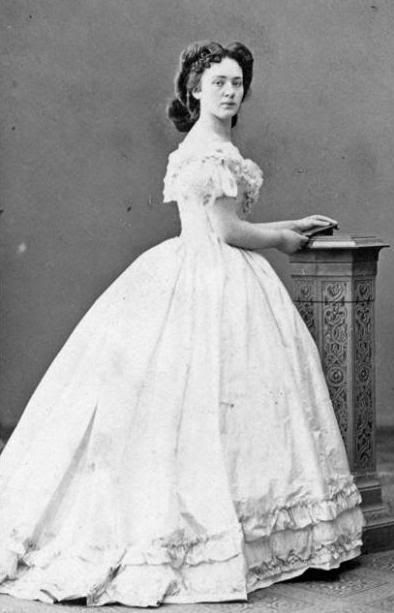
 |
 1873 - At age 30, hired by Baron Karl von Suttner as governess to his four daughters. She meets the Baron's 23-year old son,
Arthur Gundaccar Freiherr von Suttner [1850-1902], they fall in love and wish to marry, but both families oppose the match, and Bertha is forced to find other work. 1873 - At age 30, hired by Baron Karl von Suttner as governess to his four daughters. She meets the Baron's 23-year old son,
Arthur Gundaccar Freiherr von Suttner [1850-1902], they fall in love and wish to marry, but both families oppose the match, and Bertha is forced to find other work.
|
"A very wealthy, highly
educated, elderly gentleman,
living in Paris, seeks a lady, familiar with languages, also of mature years, as secretary and overseer of his household."
 |
 1876-1896 - von Suttner answers this want-ad in the Viennese newspaper Die Presse from Alfred Nobel [1833-1896] in 1876 to become secretary-housekeeper at his Paris residence. (Age 43, Nobel is not exactly "elderly." Bertha is only 10 years younger.) She remains in Paris less than two weeks before returning to Vienna and secretly marrying Arthur von Suttner. Though her personal contact with Alfred Nobel had been brief, she corresponded with him until his death in 1896, and it is believed that she was a major influence in his decision to include a peace prize among those prizes provided in his will. 1876-1896 - von Suttner answers this want-ad in the Viennese newspaper Die Presse from Alfred Nobel [1833-1896] in 1876 to become secretary-housekeeper at his Paris residence. (Age 43, Nobel is not exactly "elderly." Bertha is only 10 years younger.) She remains in Paris less than two weeks before returning to Vienna and secretly marrying Arthur von Suttner. Though her personal contact with Alfred Nobel had been brief, she corresponded with him until his death in 1896, and it is believed that she was a major influence in his decision to include a peace prize among those prizes provided in his will. 
|


 |
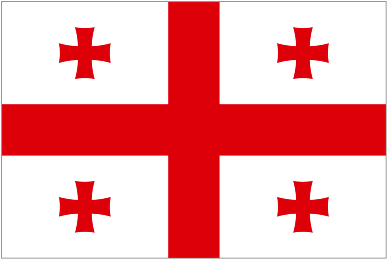 June 12, 1876 - At age 33, secretly marries engineer and novelist Baron Arthur Gundaccar Freiherr von Suttner, and they move to the Russian Caucasus (now Georgia). Over the next years they eke out a living at various jobs, at the same time enriching their intellectual life by reading widely in science, philosophy and history. During this time the Suttners write and have published six novels, as well as a number of articles. Left image is "Suttner's living house in Usnadzis kutscha in Tbilissi (Georgia)." June 12, 1876 - At age 33, secretly marries engineer and novelist Baron Arthur Gundaccar Freiherr von Suttner, and they move to the Russian Caucasus (now Georgia). Over the next years they eke out a living at various jobs, at the same time enriching their intellectual life by reading widely in science, philosophy and history. During this time the Suttners write and have published six novels, as well as a number of articles. Left image is "Suttner's living house in Usnadzis kutscha in Tbilissi (Georgia)."
|

 |
 1880 -Pacifist Hodgson Pratt [1824-1907] founds the International Arbitration & Peace Association (IAPA) in London (England). Pratt worked 14 years for the East India Company and the Bengal government in 1861 and went back to England. After 1880, he visited a number of European cities as IAPA representative, such as Berlin, Frankfurt, Paris, Copenhagen, Stockholm, Budapest, Milan and Rome. He led the British delegation at the peace conference in 1882 in Brussels, attended by over 500 delegates from many countries. In 1883 he was with Henri La Fontaine [1854-1943], the impetus for the Belgian Society for mediation and peace to found. Together with Franz Napian Wirth [1826-1897] he founded in 1886 Frankfurt Peace Society. Pratt was 1890 Chairman of the [2nd] World Peace Congress in London. He was also co-founded by him during Kommissonsmitglied of the [3rd] World Peace Congress 1891 in Rome Bureau International Permanent de la Paix, which was based in Bern (Switzerland). In 1894 he was invited by Pierre de Coubertin [1863-1937], as an honorary member to participate in the founding congress of the International Olympic Committee (IOC).
Pratt was nominated in 1906 for the Nobel Peace Prize, but it went instead to US President Theodore Roosevelt. 1880 -Pacifist Hodgson Pratt [1824-1907] founds the International Arbitration & Peace Association (IAPA) in London (England). Pratt worked 14 years for the East India Company and the Bengal government in 1861 and went back to England. After 1880, he visited a number of European cities as IAPA representative, such as Berlin, Frankfurt, Paris, Copenhagen, Stockholm, Budapest, Milan and Rome. He led the British delegation at the peace conference in 1882 in Brussels, attended by over 500 delegates from many countries. In 1883 he was with Henri La Fontaine [1854-1943], the impetus for the Belgian Society for mediation and peace to found. Together with Franz Napian Wirth [1826-1897] he founded in 1886 Frankfurt Peace Society. Pratt was 1890 Chairman of the [2nd] World Peace Congress in London. He was also co-founded by him during Kommissonsmitglied of the [3rd] World Peace Congress 1891 in Rome Bureau International Permanent de la Paix, which was based in Bern (Switzerland). In 1894 he was invited by Pierre de Coubertin [1863-1937], as an honorary member to participate in the founding congress of the International Olympic Committee (IOC).
Pratt was nominated in 1906 for the Nobel Peace Prize, but it went instead to US President Theodore Roosevelt.
|
 |
 1885 - Arthur and Bertha are reconciled with his family and are offered a permanent suite in the von Suttner castle in Vienna. 1885 - Arthur and Bertha are reconciled with his family and are offered a permanent suite in the von Suttner castle in Vienna.
|
 1886. von Suttner publishes Daniela Dormes in 1886.
Click here for a list of her published works 1885-1912.
1886. von Suttner publishes Daniela Dormes in 1886.
Click here for a list of her published works 1885-1912.

 |
 1887 - During a visit to Paris, Bertha learns for the first time of the International Peace & Arbitration Association, based in London, whose goal was the establishment of an international court of arbitration. She promptly joins the association and becomes its leading spokesperson. In the hopes of reaching a wider audience, she researches the war, talking to army surgeons, field officers and others who graphically described the grim realities of war. (Hodgson Pratt's reply to von Suttner, dated July 1889, is reprinted in English -- together with a German trranlation in a long footnote -- in Die Waffen nieder!.) 1887 - During a visit to Paris, Bertha learns for the first time of the International Peace & Arbitration Association, based in London, whose goal was the establishment of an international court of arbitration. She promptly joins the association and becomes its leading spokesperson. In the hopes of reaching a wider audience, she researches the war, talking to army surgeons, field officers and others who graphically described the grim realities of war. (Hodgson Pratt's reply to von Suttner, dated July 1889, is reprinted in English -- together with a German trranlation in a long footnote -- in Die Waffen nieder!.)
|
1888. Das Maschinenzeitalter: Zukunftsvorlesungen uber unsere Zeit (The Machine Age) in 1889. Her books were distinguished by both moral views and an interest in scientific and philosophical ideas. In fact, sensing that the scientific themes of Das Maschinenzeitalter would not be taken seriously if published under a woman's name at that time, Suttner released the book under the pseudonym "Jemand," or "anyone." The book did sell well and provided Suttner and her husband with enough money to move to Paris.
 

 | B
O
O
K |
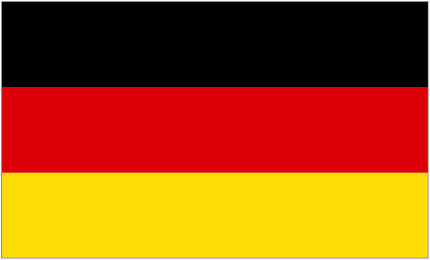 1889 - Publication of her best selling novel, Die Waffen nieder! ("Lay Down Your Arms!") by Edgar Pierson in Dresden (Germany). "Reached within a short time, a superior awareness and dissemination. Three years later an English edition ("Lay Down Your Arms"), followed in 1897 Italian ("Down with le Armi"), 1899 French ("bas les armes!") And in 1905 a Spanish ("Abajo las armas" ). The novel was printed until 1905 in 37 German editions from various publishers and been translated into 16 languages, including Finnish, Danish ("Ned med Vaabnene!"), Norwegian ("Ned med Vaabnene!"), Swedish and Czech. Until the publication of the novel "The Western Front" by Erich Maria Remarque in 1929 was "Lay down your arms!" as the most important work of the anti-war literature. [Google translation]" Published "The Machine Age" in the same year (1889). 1889 - Publication of her best selling novel, Die Waffen nieder! ("Lay Down Your Arms!") by Edgar Pierson in Dresden (Germany). "Reached within a short time, a superior awareness and dissemination. Three years later an English edition ("Lay Down Your Arms"), followed in 1897 Italian ("Down with le Armi"), 1899 French ("bas les armes!") And in 1905 a Spanish ("Abajo las armas" ). The novel was printed until 1905 in 37 German editions from various publishers and been translated into 16 languages, including Finnish, Danish ("Ned med Vaabnene!"), Norwegian ("Ned med Vaabnene!"), Swedish and Czech. Until the publication of the novel "The Western Front" by Erich Maria Remarque in 1929 was "Lay down your arms!" as the most important work of the anti-war literature. [Google translation]" Published "The Machine Age" in the same year (1889).
|
 |
 1891 - von Suttner founds
the "Österreichische Friedensgesellschaft" (Austrian Peace Society of Friends), a pacifist organization -- since 1964 called Suttner-Gesellschaft (Suttner Society) -- and the following year, the German Peace Society. She was Vice President of the International Peace Bureau in Bern. In three points ("Three major topic on the revision of the States Relations"), she took her idea of how to solve conflicts are peacefully together:
1. Arbitration agreements, the conflicts between states by peaceful means attached any,
2. Peace Union of States who rejected any attack by one state against another state in common,
3. International Court of Justice, representing the right supra-national and make binding decisions.
She also helps establish the German Peace Association, the International Peace Bureau in Geneva in 1893, and the Hungarian Peace Society in 1896. She is credited with being the first woman political journalist in the German language. 1891 - von Suttner founds
the "Österreichische Friedensgesellschaft" (Austrian Peace Society of Friends), a pacifist organization -- since 1964 called Suttner-Gesellschaft (Suttner Society) -- and the following year, the German Peace Society. She was Vice President of the International Peace Bureau in Bern. In three points ("Three major topic on the revision of the States Relations"), she took her idea of how to solve conflicts are peacefully together:
1. Arbitration agreements, the conflicts between states by peaceful means attached any,
2. Peace Union of States who rejected any attack by one state against another state in common,
3. International Court of Justice, representing the right supra-national and make binding decisions.
She also helps establish the German Peace Association, the International Peace Bureau in Geneva in 1893, and the Hungarian Peace Society in 1896. She is credited with being the first woman political journalist in the German language.
|

 |
 1891 - Alfred Hermann Fried [1864-1921], in Berlin, founds the pacifist periodical Die Waffen nieder! (“Lay Down Your Arms!”) -- from 1899 called Friedenswarte (“The Peacekeeper”) -- with Bertha von Suttner. First issue appears in January 1892. In 1892 he founds the Deutsche Friedensgesellschaft (German Peace Society), which becomes the focus for the German pacifist movement before World War I. Fried advocated “fundamental pacifism” and believed that “international anarchy” should be met by both legislative measures and spiritual regeneration. Fried is a leader of the Esperanto movement and will receive the Nobel Peace Prize in 1911. 1891 - Alfred Hermann Fried [1864-1921], in Berlin, founds the pacifist periodical Die Waffen nieder! (“Lay Down Your Arms!”) -- from 1899 called Friedenswarte (“The Peacekeeper”) -- with Bertha von Suttner. First issue appears in January 1892. In 1892 he founds the Deutsche Friedensgesellschaft (German Peace Society), which becomes the focus for the German pacifist movement before World War I. Fried advocated “fundamental pacifism” and believed that “international anarchy” should be met by both legislative measures and spiritual regeneration. Fried is a leader of the Esperanto movement and will receive the Nobel Peace Prize in 1911. 
|
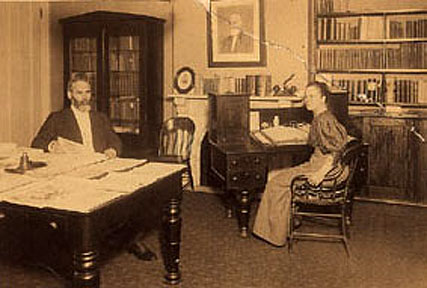
 | B
O
O
K
|   1897 or 1899 - "The Federation of the World" is published by Benjamin Franklin Trueblood [1847-1916]. A Quaker, Trueblood was educated at Earlham College in Richmond, Indiana (AB 1869 & AM 1875), and at the State University of Iowa (LLD 1890). He was president of Wilmington College in Wilmington, Ohio (1874-1879), president of Penn College in Oskaloosa, Iowa (1879-1890), and general secretary of the American Peace Society in Boston & Washington (1892-1915). Click here for more photos of Trueblood. 1897 or 1899 - "The Federation of the World" is published by Benjamin Franklin Trueblood [1847-1916]. A Quaker, Trueblood was educated at Earlham College in Richmond, Indiana (AB 1869 & AM 1875), and at the State University of Iowa (LLD 1890). He was president of Wilmington College in Wilmington, Ohio (1874-1879), president of Penn College in Oskaloosa, Iowa (1879-1890), and general secretary of the American Peace Society in Boston & Washington (1892-1915). Click here for more photos of Trueblood.
|
 |
 August 12-16, 1897 - 8th Universal Peace Congress (aka World Peace Congress), Hamburg (Germany).
Group photo includes Bertha von Suttner, Benjamin Franklin Trueblood & W. Evans Darby (secretary of the Peace Society in the UK).
Click here for other photos from the Swarthmore College Peace Collection, including peace conferences in 1901 (Glasgow), 1906 (Milan), 1907 (Munich), 1908 (London), 1910 (Stockholm) & 1912 (Geneva). August 12-16, 1897 - 8th Universal Peace Congress (aka World Peace Congress), Hamburg (Germany).
Group photo includes Bertha von Suttner, Benjamin Franklin Trueblood & W. Evans Darby (secretary of the Peace Society in the UK).
Click here for other photos from the Swarthmore College Peace Collection, including peace conferences in 1901 (Glasgow), 1906 (Milan), 1907 (Munich), 1908 (London), 1910 (Stockholm) & 1912 (Geneva).
|
 | C
O
N
F |
 August 29-31, 1897 - First Zionist Congress, Basel (Switzerland). Convened & chaired by Theodor Herzl [1860-1904], founder of the modern Zionism movement. Formulated a Zionist platform, known as the Basle program, and founded the Zionist Organization. N.B.:
"Herzl paid for Bertha von Suttner's stay in The Hague during the 1899
conference (or the second one in 1907, or both, I should check. I think she
sent copy for his newspaper to pay her debt to him). He was also in touch
regarding his proposal for a Jewish home with von Suttner's fellow peace campaigner,
Jan Bloch." -- Peter van den Dungen, 26Apr11.
August 29-31, 1897 - First Zionist Congress, Basel (Switzerland). Convened & chaired by Theodor Herzl [1860-1904], founder of the modern Zionism movement. Formulated a Zionist platform, known as the Basle program, and founded the Zionist Organization. N.B.:
"Herzl paid for Bertha von Suttner's stay in The Hague during the 1899
conference (or the second one in 1907, or both, I should check. I think she
sent copy for his newspaper to pay her debt to him). He was also in touch
regarding his proposal for a Jewish home with von Suttner's fellow peace campaigner,
Jan Bloch." -- Peter van den Dungen, 26Apr11.
| 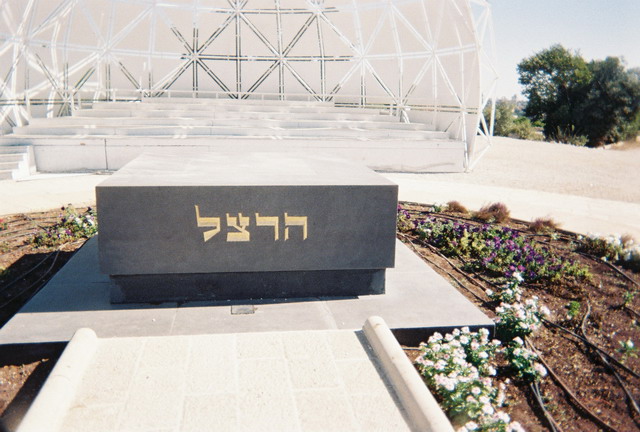 
| G
R
A
V
E |
 1949 - Grave of Theodor Herzl, Mount Herzl (Har Herzl or Mount of Memory), Jerusalem (Israel). When Herzl died in 1904, he was interred in Vienna. It was only in 1949, 45 years later, that Herzl's remains were brought to Israel and reinterred in Jerusalem. Mount Herzl is Israel's national cemetery on the west side of Jerusalem. Herzl's tomb lies at the top of the hill. Israel's war dead are also buried there.
Yad Vashem lies just to the west of Mount Herzl. 1949 - Grave of Theodor Herzl, Mount Herzl (Har Herzl or Mount of Memory), Jerusalem (Israel). When Herzl died in 1904, he was interred in Vienna. It was only in 1949, 45 years later, that Herzl's remains were brought to Israel and reinterred in Jerusalem. Mount Herzl is Israel's national cemetery on the west side of Jerusalem. Herzl's tomb lies at the top of the hill. Israel's war dead are also buried there.
Yad Vashem lies just to the west of Mount Herzl.
|
 | 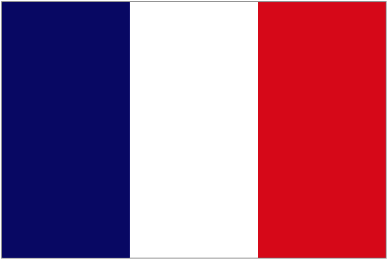 1897 - "Les Grands Artisans de L'Arbitrage et de la Paix / The Great Artisans of Arbitrage and Peace" by French artist Henri-Camille Danger [1857-1937]. Where is the original mural? Image shows damaged steel engraving which blongs to the Swarthmore College Peace Collection & is labeled "Given to Benjamin Trueblood [1847-1916]." /// From Arthur Eyffinger (1999), p. 335: "Among contemporary peace leaders, one recognizes Mancini, Frederic Passy, the Baroness von Suttner, Bajer and Nobel. The work was highly acclaimed in its day." /// From Arthur Eyffinger (2013), p. 122: "Intriguingly, on the great mural...which depicts the history of [arbitrage] through the ages and was a kind of echo of Raphael's 'School of Athens' (1510), Bertha von Suttner [1843-1914] is the only woman to be represented." 1897 - "Les Grands Artisans de L'Arbitrage et de la Paix / The Great Artisans of Arbitrage and Peace" by French artist Henri-Camille Danger [1857-1937]. Where is the original mural? Image shows damaged steel engraving which blongs to the Swarthmore College Peace Collection & is labeled "Given to Benjamin Trueblood [1847-1916]." /// From Arthur Eyffinger (1999), p. 335: "Among contemporary peace leaders, one recognizes Mancini, Frederic Passy, the Baroness von Suttner, Bajer and Nobel. The work was highly acclaimed in its day." /// From Arthur Eyffinger (2013), p. 122: "Intriguingly, on the great mural...which depicts the history of [arbitrage] through the ages and was a kind of echo of Raphael's 'School of Athens' (1510), Bertha von Suttner [1843-1914] is the only woman to be represented."
|


 | B
O
O
K |
 1898 -
Publication of "La Guerre. Traduction de l'ouvrage russe: La guerre future aux points de vue technique, economique et politiqe," by Jan Bloch, aka Jean de Bloch [1836-1902], a Polish-Russian entrepreneur. Bloch was intrigued by the devastating victory of Prussia/Germany over France in 1870, which suggested to him that the solution of diplomatic problems by warfare had become obsolete in Europe. He published his six volume master work, La Guerre Future in Paris in 1898. US editions published in Boston were titled "The future of War in its technical, economic, and political relations" -- & also "Is War Now Impossible?"? Information courtesy of Peter van den Dungen. 1898 -
Publication of "La Guerre. Traduction de l'ouvrage russe: La guerre future aux points de vue technique, economique et politiqe," by Jan Bloch, aka Jean de Bloch [1836-1902], a Polish-Russian entrepreneur. Bloch was intrigued by the devastating victory of Prussia/Germany over France in 1870, which suggested to him that the solution of diplomatic problems by warfare had become obsolete in Europe. He published his six volume master work, La Guerre Future in Paris in 1898. US editions published in Boston were titled "The future of War in its technical, economic, and political relations" -- & also "Is War Now Impossible?"? Information courtesy of Peter van den Dungen. 
|


 | C
O
N
F
E
R
E
N
C
E |  May 18-July 29, 1899 - First Hague Peace Conference, Orange Hall/Oranjezaal, Huis ten Bosch/House in the Woods/Palais au Bois, The Hague (Netherlands). "Not driven by the sudden conversion of Europe's rulers to pacifism, but by Russia's desire to escape the crushing burden of keeping up with Germany and England's armament pace in Western Europe. Although certain idealistic motives played roles, no progress was made on disarmament at the end of each day.
Nevertheless, the Conference was not without important results: First, it produced a convention for the Pacific Settlement of Disputes -- which resulted in the establishment of the first international organization, the Permanent Court of
Arbitration [PCA]; secondly, an issue on Laws and Customs of War on Land known as 'The Hague Convention' -- which remains as the most important source of humanitarian law today; & a third concerning Maritime Warfare. The conference adopted "Declarations" to the effect that throwing projectiles from balloons & other aircraft had an indiscriminate effect on civilians, & the use of asphyxiating gases & dum dum bullets should be forbidden because of their inhumane nature (defenders of nuclear weapons, please note). They further expressed that another conference be held to deal with the unfinished portions of the agenda." Lower image shows the Russian delegation. US delegation headed by Andrew Dickson White [1832-1918]. May 18-July 29, 1899 - First Hague Peace Conference, Orange Hall/Oranjezaal, Huis ten Bosch/House in the Woods/Palais au Bois, The Hague (Netherlands). "Not driven by the sudden conversion of Europe's rulers to pacifism, but by Russia's desire to escape the crushing burden of keeping up with Germany and England's armament pace in Western Europe. Although certain idealistic motives played roles, no progress was made on disarmament at the end of each day.
Nevertheless, the Conference was not without important results: First, it produced a convention for the Pacific Settlement of Disputes -- which resulted in the establishment of the first international organization, the Permanent Court of
Arbitration [PCA]; secondly, an issue on Laws and Customs of War on Land known as 'The Hague Convention' -- which remains as the most important source of humanitarian law today; & a third concerning Maritime Warfare. The conference adopted "Declarations" to the effect that throwing projectiles from balloons & other aircraft had an indiscriminate effect on civilians, & the use of asphyxiating gases & dum dum bullets should be forbidden because of their inhumane nature (defenders of nuclear weapons, please note). They further expressed that another conference be held to deal with the unfinished portions of the agenda." Lower image shows the Russian delegation. US delegation headed by Andrew Dickson White [1832-1918].
|  "Handmade oil painting reproduction of advertisement for a Parisian clothes outfitters ["High Life Tailor"] referring to the First Hague Peace Conference of 1899, a painting by Colomb B. Moloch." "Handmade oil painting reproduction of advertisement for a Parisian clothes outfitters ["High Life Tailor"] referring to the First Hague Peace Conference of 1899, a painting by Colomb B. Moloch."
|
Note: von Suttner held a salon in conjunction with the First Hague Peace Conference (Netherlands), in which she and other peace advocates convinced delegates to make establishing a structure for resolving international conflict their primary concern. This was the first known international lobby effort for peace that was effective. Diary entry by Bertha von Suttner [1843-1914], the only female attendee: "The 18th of May, 1899! This is an epochal date in the history of the world. Peace Conference! For ten long years the words and the idea have been laughed to scorn..." /// N.B.: May 18 will be proposed later to be celebrated as Peace Day or International Peace Day.

|  1899? - "Guerre à la guerre / War Against War" by Dutch painter Jan ten Kate [1850-1929], "The Dutch Vereshchagin" (qv). Canvas about 4x5 meters. Fried, Zola, Tolstoy, Czar Nicholas II, Dunant & other famous peacemakers are depicted in the foreground, including Bertha von Suttner [1843-1914] who is raising a Cross to ward off Death. One of three large ten Kate paintings which hung in Jean Bloch's International Museum of War & Peace, Lucerne (Switzerland), from 1902 until 1919/1920. (The other two were "La Garde à Mort/The Death Guard" & "Der Friedensengel/The Angel of Peace.") From Prof Peter van den Dungen 18Oct2013: " I researched [ten Kate's] peace paintings as part of my study of the history of the Bloch museum (published in 1981 in the Swiss Historical Journal), and was not successful in tracing any of the large paintings of his which were in the museum. More recently, colleagues in Lucerne also drew a blank. Arthur [Eyffinger] has reproductions in his books, but is unlikely to know more. I was first approached by a Dutch colleague about the Ten Kate paintings in Lucerne in the late 1970's, and it is frustrating that we are as ignorant now as then. One of the things I have never done is to pursue this matter via the professional art world, where there must exist various registers with the whereabouts of paintings." 1899? - "Guerre à la guerre / War Against War" by Dutch painter Jan ten Kate [1850-1929], "The Dutch Vereshchagin" (qv). Canvas about 4x5 meters. Fried, Zola, Tolstoy, Czar Nicholas II, Dunant & other famous peacemakers are depicted in the foreground, including Bertha von Suttner [1843-1914] who is raising a Cross to ward off Death. One of three large ten Kate paintings which hung in Jean Bloch's International Museum of War & Peace, Lucerne (Switzerland), from 1902 until 1919/1920. (The other two were "La Garde à Mort/The Death Guard" & "Der Friedensengel/The Angel of Peace.") From Prof Peter van den Dungen 18Oct2013: " I researched [ten Kate's] peace paintings as part of my study of the history of the Bloch museum (published in 1981 in the Swiss Historical Journal), and was not successful in tracing any of the large paintings of his which were in the museum. More recently, colleagues in Lucerne also drew a blank. Arthur [Eyffinger] has reproductions in his books, but is unlikely to know more. I was first approached by a Dutch colleague about the Ten Kate paintings in Lucerne in the late 1970's, and it is frustrating that we are as ignorant now as then. One of the things I have never done is to pursue this matter via the professional art world, where there must exist various registers with the whereabouts of paintings." 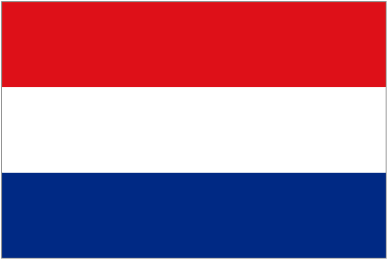
|
Diary entry by Bertha von Suttner [1843-1914]: "The artist Ten Kate today gives us a jolly dinner at the hotel Twee Steeden, where he lives during his sojourn at The Hague - His own home is the estate Epe. His lovely wife does the honours. Among the guests are Mesdames von Waszklewicz and Selenka, Herr von Bloch, Novikof, Dr. Trueblood, and A.H. Fried, - in short a little Peace Congess in itself."



| M
U
SE
U
M |  June 7, 1902 - International Museum of War & Peace, Luzern/Lucerne (Switzerland). Although created by Ivan Bloch, aka Jean de Bloch [1836-1902], a Polish-Russian entrepreneur & author of the 6-volume master work, La Guerre Future / Is War Now Impossible? (1898), Bloch died in Warsaw at the beginning of 1902, and the museum was inaugerated in Shooting Festival Hall by Frédéric Passy & Bertha von Suttner (who respetively received the 1st & 5th Nobel Peace Prizes in 1901 & 1905).
Museum moved to Museggstrasse in 1910 & closed in 1920 due to lack of patronage during World War I. Site is now Culture & Congress Centre by French architect Jean Nouvel (1998). See "The International Museum of War and Peace at Lucerne" by Peter van den Dungen, Schweizerische Zeitschrift fur Geschichte, vol, 31, pp, 185-202 (1981). June 7, 1902 - International Museum of War & Peace, Luzern/Lucerne (Switzerland). Although created by Ivan Bloch, aka Jean de Bloch [1836-1902], a Polish-Russian entrepreneur & author of the 6-volume master work, La Guerre Future / Is War Now Impossible? (1898), Bloch died in Warsaw at the beginning of 1902, and the museum was inaugerated in Shooting Festival Hall by Frédéric Passy & Bertha von Suttner (who respetively received the 1st & 5th Nobel Peace Prizes in 1901 & 1905).
Museum moved to Museggstrasse in 1910 & closed in 1920 due to lack of patronage during World War I. Site is now Culture & Congress Centre by French architect Jean Nouvel (1998). See "The International Museum of War and Peace at Lucerne" by Peter van den Dungen, Schweizerische Zeitschrift fur Geschichte, vol, 31, pp, 185-202 (1981). 
|
Note: von Suttner says, "our age has been presented with something new and and unprecedented: the embodiment through a building of a similarly new and unprecedented idea... Through the museum this theory will undoubtedly penetrate in much larger circles than could be reached by the book, and will also be easier to grasp."
 |
 1902 -
Overcoming great obstacles set up to oppose collaboration among different nationalities and parties in Austria-Hungary finally nineteen groups join together building the NCW - National Council of Woman Austria (Bund Österreichischer Frauenvereine). 1902 -
Overcoming great obstacles set up to oppose collaboration among different nationalities and parties in Austria-Hungary finally nineteen groups join together building the NCW - National Council of Woman Austria (Bund Österreichischer Frauenvereine).
|
 |
 December 10, 1902 - Death of husband Arthur Gundaccar Freiherr von Suttner [1850-1902] at age 52. Bertha always called him "my own." She will wear widow's black for the remainder of her life (12 years). December 10, 1902 - Death of husband Arthur Gundaccar Freiherr von Suttner [1850-1902] at age 52. Bertha always called him "my own." She will wear widow's black for the remainder of her life (12 years).
|


![]()
|    March 13, 1904 - Cristo Redentor de los Andes / Christ of the Andes, Uspallata Pass, Andes Mountains (Argentina/Chile). Celebrates the Peace of King Edward VII [1841-1910] of England. The statue was cast from melted military armaments, and hauled thirteen thousand feet to the top of the mountain by the armies of both nations. The monument was on the cover of Time Magazine, December 17, 1928. March 13, 1904 - Cristo Redentor de los Andes / Christ of the Andes, Uspallata Pass, Andes Mountains (Argentina/Chile). Celebrates the Peace of King Edward VII [1841-1910] of England. The statue was cast from melted military armaments, and hauled thirteen thousand feet to the top of the mountain by the armies of both nations. The monument was on the cover of Time Magazine, December 17, 1928. 
|
 | 
 October 3-8, 1904 - 13th Universal Peace Congress, Tremont Temple, Boston, Massachusetts (USA). Official report available on-line at Google Books. Bertha von Suttner von Suttner attends the congress in Boston, followed by her first lecture tour in the United States, during which she visits the St. Louis World's Fair meets President Theodore Roosevelt in Washington, DC, sees Niagara Falls, and visits Quaker communities ("that offer an inspiring example of life devoted to non-violence"). Image shows Roosevelt & von Suttner. Its origin & meaning are unknown. October 3-8, 1904 - 13th Universal Peace Congress, Tremont Temple, Boston, Massachusetts (USA). Official report available on-line at Google Books. Bertha von Suttner von Suttner attends the congress in Boston, followed by her first lecture tour in the United States, during which she visits the St. Louis World's Fair meets President Theodore Roosevelt in Washington, DC, sees Niagara Falls, and visits Quaker communities ("that offer an inspiring example of life devoted to non-violence"). Image shows Roosevelt & von Suttner. Its origin & meaning are unknown.
|
 | N
O
B
E
L |
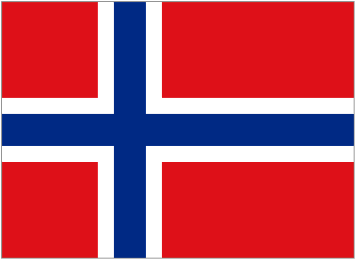 December 10, 1905 - von Suttner is named to receive the fifth Nobel Peace Prize (thus becoming the first woman peace laureate). Image is bust of Alfred Nobel in Oslo (Norway). December 10, 1905 - von Suttner is named to receive the fifth Nobel Peace Prize (thus becoming the first woman peace laureate). Image is bust of Alfred Nobel in Oslo (Norway). 
|
 |
 April 18, 1906 - "The evolution of the peace movement," Hals Brothers Concert Hall, Kristiania (Oslo) (Norway). "Impressive adresss" by von Suttner to packed audience. Introduced by poet Bjørnstjerne Bjørnson [1832-1910], winner of 1903 Nobel Prize for Literature. Opening words: "The stars of eternal truth and right have always shone in the firmament of human understanding. The process of bringing them down to earth, remolding them into practical forms, imbuing them with vitality, and then making use of them, has been a long one..." von Suttner visits Denmark after receiving the prize in Oslo. April 18, 1906 - "The evolution of the peace movement," Hals Brothers Concert Hall, Kristiania (Oslo) (Norway). "Impressive adresss" by von Suttner to packed audience. Introduced by poet Bjørnstjerne Bjørnson [1832-1910], winner of 1903 Nobel Prize for Literature. Opening words: "The stars of eternal truth and right have always shone in the firmament of human understanding. The process of bringing them down to earth, remolding them into practical forms, imbuing them with vitality, and then making use of them, has been a long one..." von Suttner visits Denmark after receiving the prize in Oslo. 
|


| C
O
N
F
E
R
E
N
C
E |  June 15-October, 1907 - Second Hague Peace Conference, Ridderzaal / Hall of Knights / Salle des Comtes, The Hague (Netherlands).
"It is a little known fact that the initiative for the Second Hague Peace Conference came from civil society in the United States. Prompted by a petition in 1903 from the American Peace Society in Boston, the Massachusetts legislature passed a resolution requesting Congress to authorize the President of the United States to invite the governments of the world to join in establishing a regular international congress to meet at stated periods to deliberate upon the various questions of common interest. The idea was taken up in St. Louis in 1904 [year of the St. Louis Worlds Fair] by the Interparliamentary Union (IPU) that recommended a conference to deal with the subjects postponed at The Hague in 1899. It led to the negotiation of a series of arbitration treaties among the various nations and the consideration of plans for a series of congresses-the kind recommended by the Massachusetts legislature.
President Theodore Roosevelt [1858-1919] responded to this invitation by convening the Second Hague Peace Conference. It was held on June 15, 1907, after being formally convened by the Czar. This time, Russia proposed an agenda limited to improvements in arbitration and humanitarian law, while America suggested discussing the limitation of armaments and the use of force in the collection of debts." /// The Ridderzaal is the main building of the Dutch Parliament (Het Binnenhof) & is used for official royal receptions, interparliamentary conferences, etc. On the third Tuesday in September (Prinsjesdag) the Dutch monarch drives to the Ridderzaal in the Golden Carriage & opens Parliament by delivering a speech from the throne. June 15-October, 1907 - Second Hague Peace Conference, Ridderzaal / Hall of Knights / Salle des Comtes, The Hague (Netherlands).
"It is a little known fact that the initiative for the Second Hague Peace Conference came from civil society in the United States. Prompted by a petition in 1903 from the American Peace Society in Boston, the Massachusetts legislature passed a resolution requesting Congress to authorize the President of the United States to invite the governments of the world to join in establishing a regular international congress to meet at stated periods to deliberate upon the various questions of common interest. The idea was taken up in St. Louis in 1904 [year of the St. Louis Worlds Fair] by the Interparliamentary Union (IPU) that recommended a conference to deal with the subjects postponed at The Hague in 1899. It led to the negotiation of a series of arbitration treaties among the various nations and the consideration of plans for a series of congresses-the kind recommended by the Massachusetts legislature.
President Theodore Roosevelt [1858-1919] responded to this invitation by convening the Second Hague Peace Conference. It was held on June 15, 1907, after being formally convened by the Czar. This time, Russia proposed an agenda limited to improvements in arbitration and humanitarian law, while America suggested discussing the limitation of armaments and the use of force in the collection of debts." /// The Ridderzaal is the main building of the Dutch Parliament (Het Binnenhof) & is used for official royal receptions, interparliamentary conferences, etc. On the third Tuesday in September (Prinsjesdag) the Dutch monarch drives to the Ridderzaal in the Golden Carriage & opens Parliament by delivering a speech from the throne.
|
Note: Bertha von Suttner presents NCW Austria's resolution favouring pacifist aims to the President of the Second Peace Conference at The Hague. von Suttner contributed lectures and articles to the International Club established at the Second Hague Peace Conference.
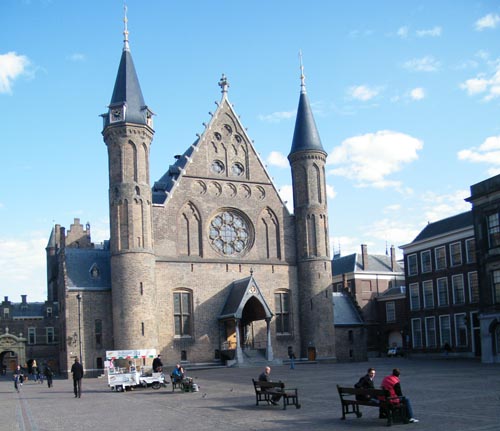
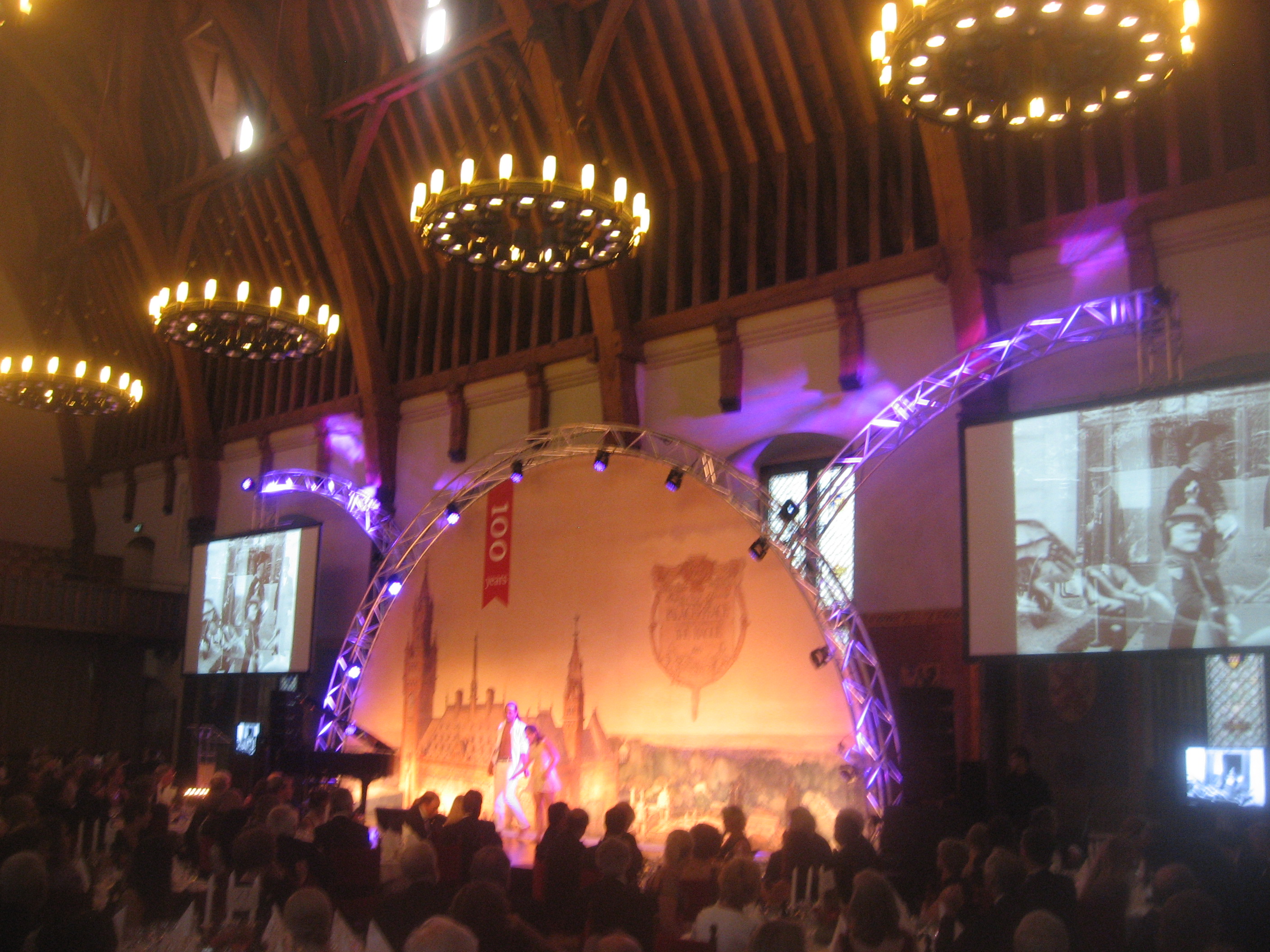
 |  June 15, 1907 - Ridderzaal / Salle des Comtes / Hall of Knights, The Hague (Netherlands). Unintentional monument. Ancient building restored 1898-1904 to serve its present purposes. Venue of the Second Hague Peace Conference, June-October 1907, & of the Peace Palace Philanthropy Gala on 2 September 2013.
Right image by EWL shows the stage erected for the gala on 2 September 2013 (opposite the throne). June 15, 1907 - Ridderzaal / Salle des Comtes / Hall of Knights, The Hague (Netherlands). Unintentional monument. Ancient building restored 1898-1904 to serve its present purposes. Venue of the Second Hague Peace Conference, June-October 1907, & of the Peace Palace Philanthropy Gala on 2 September 2013.
Right image by EWL shows the stage erected for the gala on 2 September 2013 (opposite the throne).
|
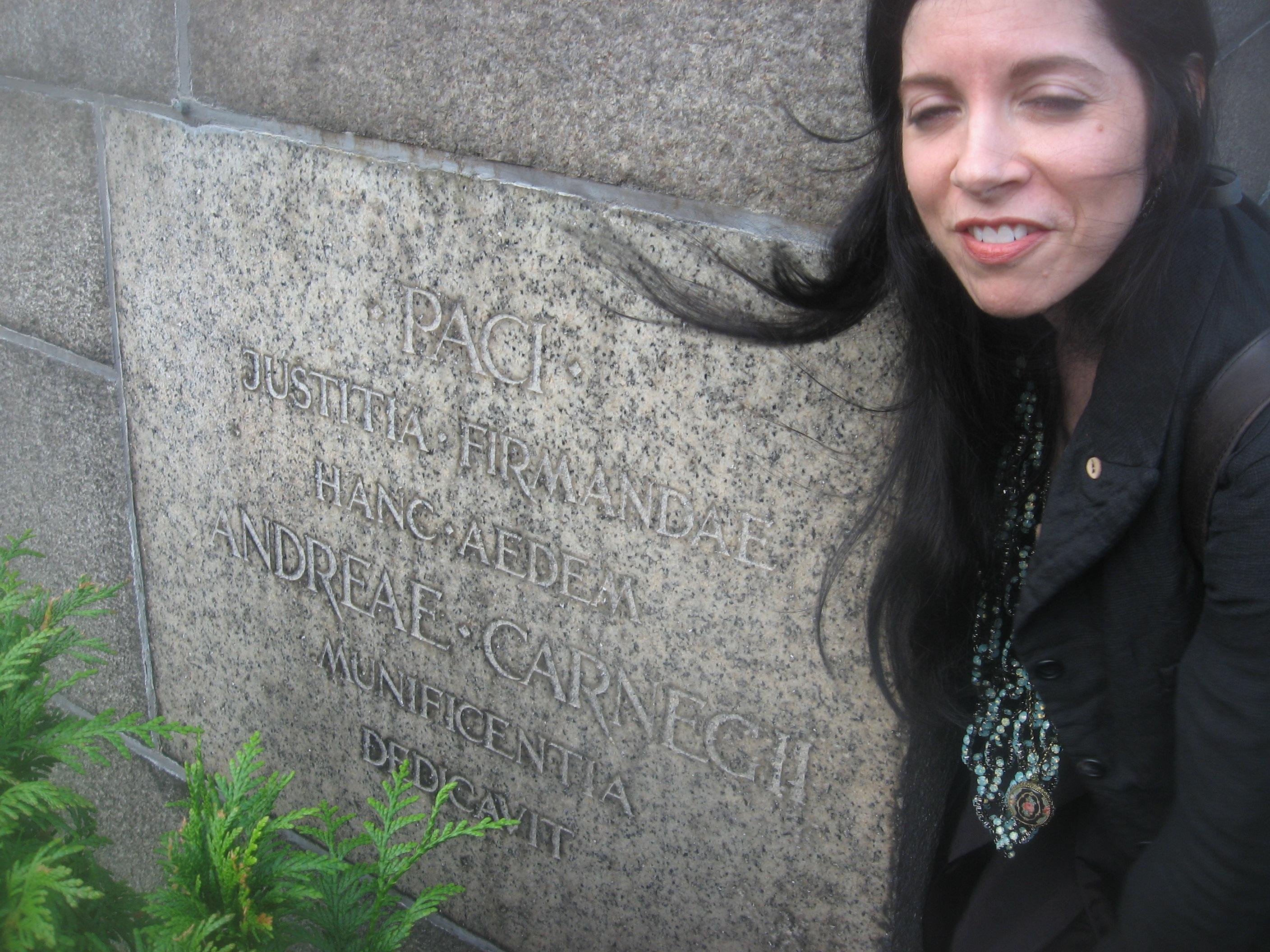
|  July 30, 1907 - Cornerstone,
Vredespaleis / Peace Palace, Carnegieplein 2, The Hague (Netherlands). Ceremoniously "laid" at a temporary site by Alexandre Ivanovitch de Nelidoff [1836-1910], Russian ambassador to France & president of the Second Hague Peace Conference. Now behind some shrubs on the northeast corner of the building. Inscribed: "'Paci Justitia Firmandaj
Hanc Aedem Andreae Carnegie Munificentia Dedicavit / To preserve Peace through Justice the Munificence of Andrew Carnegie So Dedicates This Temple." /// In America, The Catholic Fortnightly Review publishes "The Apotheosis of Hank Edem." Excerpt: "Hank Edem was a stonemason, and a good one, [but he] could not stand prosperity... Here he is mingling with the effete and the haut monde,
and getting boarding schoolish about his name. Now he spells it 'Hanc Aedem.' We are sorry... Mr.
Carnegie, of course, can spell his name any way he pleases." /// Image by EWL shows Hope Elizabeth May at the cornerstone 3 Sept 2013. July 30, 1907 - Cornerstone,
Vredespaleis / Peace Palace, Carnegieplein 2, The Hague (Netherlands). Ceremoniously "laid" at a temporary site by Alexandre Ivanovitch de Nelidoff [1836-1910], Russian ambassador to France & president of the Second Hague Peace Conference. Now behind some shrubs on the northeast corner of the building. Inscribed: "'Paci Justitia Firmandaj
Hanc Aedem Andreae Carnegie Munificentia Dedicavit / To preserve Peace through Justice the Munificence of Andrew Carnegie So Dedicates This Temple." /// In America, The Catholic Fortnightly Review publishes "The Apotheosis of Hank Edem." Excerpt: "Hank Edem was a stonemason, and a good one, [but he] could not stand prosperity... Here he is mingling with the effete and the haut monde,
and getting boarding schoolish about his name. Now he spells it 'Hanc Aedem.' We are sorry... Mr.
Carnegie, of course, can spell his name any way he pleases." /// Image by EWL shows Hope Elizabeth May at the cornerstone 3 Sept 2013.
|
 1908 - "Lay Down Your Arms," authorized English translation by T. Holmes, New York (USA). Click here for the complete text.
1908 - "Lay Down Your Arms," authorized English translation by T. Holmes, New York (USA). Click here for the complete text.

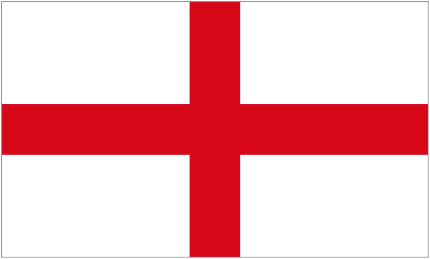 1908 - von Suttner speaks at the 1908 Peace Congress in London; she repeats again and again that «Europe is one» and that uniting it is the only way to prevent the world catastrophe which seems to be coming.
1908 - von Suttner speaks at the 1908 Peace Congress in London; she repeats again and again that «Europe is one» and that uniting it is the only way to prevent the world catastrophe which seems to be coming.
 1912 -- Last major speaking tour was a visit to the United States.
Her last major effort, made in 1912 when she was almost seventy, was a second lecture tour in the United States, the first having followed her attending the International Peace Congress of 1904 in Boston.
1912 -- Last major speaking tour was a visit to the United States.
Her last major effort, made in 1912 when she was almost seventy, was a second lecture tour in the United States, the first having followed her attending the International Peace Congress of 1904 in Boston.
 |   Thursday, December 5, 1912 - "Peace," Lecture by Baroness Bertha von Suttner, McCoy Hall, Johns Hopkins University, Baltimore, Maryland (USA). Sponsored by Maryland Peace Society, 8:15 P.M., OPEN TO THE PUBLIC. Thursday, December 5, 1912 - "Peace," Lecture by Baroness Bertha von Suttner, McCoy Hall, Johns Hopkins University, Baltimore, Maryland (USA). Sponsored by Maryland Peace Society, 8:15 P.M., OPEN TO THE PUBLIC.
|
 August 28, 1913 -
At the inauguration of the Peace Palace, von Suttner says that peace conferences, treaties & tribunals are not sufficient by themselves: "These things also require their material forms, their easliy recognisable visible symbols, their homes. War, which has dominated the world for thousands of years, is not short of monuments and palaces. Peace has just ONE monument [sic]: the statue of Christ on the Andes; and in Europe it now has for the first time ONE beautiful building: the Peace Palace... International justice between nations has moved into a splendid home. The proud building is standing now, visible, and tangible: Temple, symbol and workplace. At least the spirt of peace is no longer homeless. The effects which will radiate from this monument are incalculable as yet. Andrew Carnegie has presented the world with a gift which has cost him a few millions but which, when it fulfills its purpose, will save the world countless billions." [quoted in part from van den Dungen, Peter (2003).]
August 28, 1913 -
At the inauguration of the Peace Palace, von Suttner says that peace conferences, treaties & tribunals are not sufficient by themselves: "These things also require their material forms, their easliy recognisable visible symbols, their homes. War, which has dominated the world for thousands of years, is not short of monuments and palaces. Peace has just ONE monument [sic]: the statue of Christ on the Andes; and in Europe it now has for the first time ONE beautiful building: the Peace Palace... International justice between nations has moved into a splendid home. The proud building is standing now, visible, and tangible: Temple, symbol and workplace. At least the spirt of peace is no longer homeless. The effects which will radiate from this monument are incalculable as yet. Andrew Carnegie has presented the world with a gift which has cost him a few millions but which, when it fulfills its purpose, will save the world countless billions." [quoted in part from van den Dungen, Peter (2003).]
 August 18-23, 1913 - XXe Congrès universel de la paix / 20th Universal Peace Congress, Ridderzaal / Hall of Knights / Salle des Comtes, The Hague (Netherlands). "Sous la haute protection de S.A.R. le prince Henri des Pays-Bas, Duc de
Mecklembourg." Attended by Bertha von Sutner [1843-1914] & Henri Mandere [1883-1959], among others. A visit to the Peace Palace (not yet formally open) is a special event on the conference programme.
August 18-23, 1913 - XXe Congrès universel de la paix / 20th Universal Peace Congress, Ridderzaal / Hall of Knights / Salle des Comtes, The Hague (Netherlands). "Sous la haute protection de S.A.R. le prince Henri des Pays-Bas, Duc de
Mecklembourg." Attended by Bertha von Sutner [1843-1914] & Henri Mandere [1883-1959], among others. A visit to the Peace Palace (not yet formally open) is a special event on the conference programme.
 |
 June 21, 1914 - Death of Bertha von Suttner (age 71) at her home, Zedlitzgasse no. 7, Vienna (Austria). Photo was taken in Vienna on June 7 in 1913 or 1914 (age 70). Archduke Franz Ferdinand of Austria is assassinated seven days later, triggering World War I. June 21, 1914 - Death of Bertha von Suttner (age 71) at her home, Zedlitzgasse no. 7, Vienna (Austria). Photo was taken in Vienna on June 7 in 1913 or 1914 (age 70). Archduke Franz Ferdinand of Austria is assassinated seven days later, triggering World War I.
|

|
 September 1914 - 21st World Peace Congress scheduled in Vienna in von Suttner's honor. The program for the congress featured an item entitled "The Suttner Museum" & reported, "The intention exists to maintain exact the apartment of the defunct Baroness Bertha von Suttner in Zedlitzgasse no. 7 also after the congress is over, and to open it up to registered participants during the congress. Afterwards, at least her study should be kept as it was when she died, and the ground floor should be given over to a Suttner-Museum." But nothing comes of this -- or of the conference -- because of the advent of WW-I. Information from Peter van den Dungen (2010). September 1914 - 21st World Peace Congress scheduled in Vienna in von Suttner's honor. The program for the congress featured an item entitled "The Suttner Museum" & reported, "The intention exists to maintain exact the apartment of the defunct Baroness Bertha von Suttner in Zedlitzgasse no. 7 also after the congress is over, and to open it up to registered participants during the congress. Afterwards, at least her study should be kept as it was when she died, and the ground floor should be given over to a Suttner-Museum." But nothing comes of this -- or of the conference -- because of the advent of WW-I. Information from Peter van den Dungen (2010).
|
 
 |
 1914 - "Die Urne Bertha von Suttners im Columbarium des Gothaer Hauptfriedhofs (Columbarium), Gotha (Germany)." "von Suttner was a member of the Austrian Association "The Flame", the cremation propagated. Sie förderte den Bau des ersten deutschen Krematoriums in Gotha und verfügte testamentarisch, dass ihr Leichnam nach Gotha überführt und dort verbrannt werden solle. It promoted the construction of the first German crematorium in Gotha, and decreed in his will that her body should be burnt and there transferred to Gotha. Die Urne mit ihrer Asche wird noch heute im dortigen Columbarium aufbewahrt. The urn with her ashes are still in there Columbarium kept." 1914 - "Die Urne Bertha von Suttners im Columbarium des Gothaer Hauptfriedhofs (Columbarium), Gotha (Germany)." "von Suttner was a member of the Austrian Association "The Flame", the cremation propagated. Sie förderte den Bau des ersten deutschen Krematoriums in Gotha und verfügte testamentarisch, dass ihr Leichnam nach Gotha überführt und dort verbrannt werden solle. It promoted the construction of the first German crematorium in Gotha, and decreed in his will that her body should be burnt and there transferred to Gotha. Die Urne mit ihrer Asche wird noch heute im dortigen Columbarium aufbewahrt. The urn with her ashes are still in there Columbarium kept."
|

 |
 Date? - Memorial Plaques, Zedlitzgasse no. 7, Vienna (Austria). Inscription: "Here lived and died Bertha von Suttner 09/06/1843 - 21/06/1914 the founder of the Austrian Peace Society." Upper plaque afffixed following the centenary of her Nobel Peace Prize in 2005. "We returned today from a very enjoyable trip to Vienna [but]
I was devastated to see that the memorial plaques for Bertha von Suttner, at the house where she lived and died, were no longer there." -- Peter van den Dungen, April 21, 2010. Date? - Memorial Plaques, Zedlitzgasse no. 7, Vienna (Austria). Inscription: "Here lived and died Bertha von Suttner 09/06/1843 - 21/06/1914 the founder of the Austrian Peace Society." Upper plaque afffixed following the centenary of her Nobel Peace Prize in 2005. "We returned today from a very enjoyable trip to Vienna [but]
I was devastated to see that the memorial plaques for Bertha von Suttner, at the house where she lived and died, were no longer there." -- Peter van den Dungen, April 21, 2010.
|
 |
 1913 - Plaque of the Royal City of Prague (Czech Republic). "Cesky: Pametní deska B.Suttnerové v Paláci Kinskych-Praha."
Inscribed in Czech & English: "The first woman Nobel Prize winner Bertha von Suttner of the Kinsky family born June 9, 1843 in Prague." 1913 - Plaque of the Royal City of Prague (Czech Republic). "Cesky: Pametní deska B.Suttnerové v Paláci Kinskych-Praha."
Inscribed in Czech & English: "The first woman Nobel Prize winner Bertha von Suttner of the Kinsky family born June 9, 1843 in Prague."
|

|
 1952? - Bertha-von-Suttner-Platz, Bonn (Germany). "7760 und 9352 der Bonner Stadtbahn an der Haltestelle Bertha-von-Suttner-Platz/Beethovenhaus." "The Bertha-von-Suttner-Platz is a crossroads of highways highway 9 and 56 on the highway end of the ramp to the Kennedy bridge, a major transport hub in Bonn. From 1952 until the seventies he was the western terminus Siegburg Railway. The station is frequented by about 20,000 daily passengers, in addition to the four rail lines stop there for 14 bus lines." 1952? - Bertha-von-Suttner-Platz, Bonn (Germany). "7760 und 9352 der Bonner Stadtbahn an der Haltestelle Bertha-von-Suttner-Platz/Beethovenhaus." "The Bertha-von-Suttner-Platz is a crossroads of highways highway 9 and 56 on the highway end of the ramp to the Kennedy bridge, a major transport hub in Bonn. From 1952 until the seventies he was the western terminus Siegburg Railway. The station is frequented by about 20,000 daily passengers, in addition to the four rail lines stop there for 14 bus lines."
|

 |
 1959 - Die Waffen nieder (1957) von Siegfried Charoux [1896-1967], Bertha-von-Suttner-Hof (housing estate), Favoritenstraße 38-40, Wien-Wieden (Austria). At the entrance of the estate, the sculpture is dedicated to Die Waffen neider! by Bertha von Suttner and depicts a fleeing war widow, with two children at her side. 1959 - Die Waffen nieder (1957) von Siegfried Charoux [1896-1967], Bertha-von-Suttner-Hof (housing estate), Favoritenstraße 38-40, Wien-Wieden (Austria). At the entrance of the estate, the sculpture is dedicated to Die Waffen neider! by Bertha von Suttner and depicts a fleeing war widow, with two children at her side.
|
 April 19, 1963 - Suttner-Gedenktafel / Suttner plaque, House 1, Zedlitzgasse 7, Vienna (Austria).
Google translation: "Today was a plaque commemorating the Austrian Nobel laureate & peace friend Bertha von Suttner reveals that lived in this building & died. The plaque also commemorates the founding of the Austrian Peace Society by Bertha von Suttner and therefore this union had borne the cost. The plaque was taken into the custody of the City of Vienna."
April 19, 1963 - Suttner-Gedenktafel / Suttner plaque, House 1, Zedlitzgasse 7, Vienna (Austria).
Google translation: "Today was a plaque commemorating the Austrian Nobel laureate & peace friend Bertha von Suttner reveals that lived in this building & died. The plaque also commemorates the founding of the Austrian Peace Society by Bertha von Suttner and therefore this union had borne the cost. The plaque was taken into the custody of the City of Vienna."
 |
 1964 -Ausgabepreis: 25 Pfennig stamp from East Germany. 1964 -Ausgabepreis: 25 Pfennig stamp from East Germany.
|
 |
 Date? - From West German the stamp series "Frauen der deutschen Geschichte" / Women of German history. Date? - From West German the stamp series "Frauen der deutschen Geschichte" / Women of German history.
|
 |
 1966 - von Suttner is pictured on the Austrian 1000 schilling bank note. 1966 - von Suttner is pictured on the Austrian 1000 schilling bank note.
|

 |
 2003? - "Face of the coin shows the radical pacifist Bertha von Suttner, a symbol of Austria's efforts over many decades for peace. Edge lettering of the coin: 2 EURO ***, repeated four times, alternately up and down." 2003? - "Face of the coin shows the radical pacifist Bertha von Suttner, a symbol of Austria's efforts over many decades for peace. Edge lettering of the coin: 2 EURO ***, repeated four times, alternately up and down."
|


 |
 May 4, 1987 - Memorial Fountain, at "Anna B. Eckstein plant," Coburg (Germany). In the "Anna B. Eckstein system" between Moor Street & the Mühlgasse Walk. "In 1985 the fountain was erected in a park in 1985 & named for Anna Bernardine Eckstein [1868-1947] on 4 May 1987... By Coburg sculptor Egon Ruggaber, cost 9300 DM, consists of a round stone column with a top-mounted small, shallow pool of water.
The teacher & pacifist, was born in 1868 in Coburg, traveled in 1884 to the USA, returned around 1910 & died in 1947 in Coburg."
/// Eckstein "was the daughter of a German officer. She left Germany in 1886 (?) for America, where she became a naturalized American citizen & joined the Boston Peace Society. She became a school teacher & later the principal of the School of Modern Languages in Boston. At the age of 16, Eckstein learned [sic] to know the Baroness Bertha von Suttner [1843-1914], who interested her in the cause of peace. Eckstein became an ardent champion of world peace, going on many world tours to promote this ideal. Eckstein was a vice-president of the American Peace Society from 1905 to 1911. She took an active role in the 2nd National Peace Congress, held in Chicago May 2-5, 1909. Edwin Ginn [1838-1914] sponsored her after she left the School of Modern Languages in order to engage wholly in peace work.
Eckstein saw as her greatest work the collection of signatures for 'The World Petition to Prevent War Between Nations,' to be signed by heads of the 44 signatory powers of the Hague Conventions. She presented the first version of the petition in 1907 to the 2nd Hague Conference with some 2 million signatures. She had some 6 million signatures [on a petition for the 3rd Hague Conference] when her efforts were ended by the advent of WW-I. During the Nazi regime, she was curbed in her peace activities. After her death, her papers & books were donated to the Swarthmore College Peace Collection by her nephew in exchange for CARE food parcels." Info courtesy of Gerard Lössbroek. May 4, 1987 - Memorial Fountain, at "Anna B. Eckstein plant," Coburg (Germany). In the "Anna B. Eckstein system" between Moor Street & the Mühlgasse Walk. "In 1985 the fountain was erected in a park in 1985 & named for Anna Bernardine Eckstein [1868-1947] on 4 May 1987... By Coburg sculptor Egon Ruggaber, cost 9300 DM, consists of a round stone column with a top-mounted small, shallow pool of water.
The teacher & pacifist, was born in 1868 in Coburg, traveled in 1884 to the USA, returned around 1910 & died in 1947 in Coburg."
/// Eckstein "was the daughter of a German officer. She left Germany in 1886 (?) for America, where she became a naturalized American citizen & joined the Boston Peace Society. She became a school teacher & later the principal of the School of Modern Languages in Boston. At the age of 16, Eckstein learned [sic] to know the Baroness Bertha von Suttner [1843-1914], who interested her in the cause of peace. Eckstein became an ardent champion of world peace, going on many world tours to promote this ideal. Eckstein was a vice-president of the American Peace Society from 1905 to 1911. She took an active role in the 2nd National Peace Congress, held in Chicago May 2-5, 1909. Edwin Ginn [1838-1914] sponsored her after she left the School of Modern Languages in order to engage wholly in peace work.
Eckstein saw as her greatest work the collection of signatures for 'The World Petition to Prevent War Between Nations,' to be signed by heads of the 44 signatory powers of the Hague Conventions. She presented the first version of the petition in 1907 to the 2nd Hague Conference with some 2 million signatures. She had some 6 million signatures [on a petition for the 3rd Hague Conference] when her efforts were ended by the advent of WW-I. During the Nazi regime, she was curbed in her peace activities. After her death, her papers & books were donated to the Swarthmore College Peace Collection by her nephew in exchange for CARE food parcels." Info courtesy of Gerard Lössbroek. 
|  September 12, 2013 - Anna-B.-Eckstein-Schule (Grundschule) / Anna-B.-Eckstein Elementary School, Schulstraße 18, Meeder, Coburg (Germany). "Since 09.12.2013 our school bears the name of Anna Bernhardine Eckstein [1868-1947], a teacher, head teacher and activist for peace, was born in 1868 in Coburg and died there in 1947... In the basement of our school is 'Lernwerkstaff Frieden / Peace Learning Workshop' of the Friedensmuseum Meeder / Meeder Peace Museum [Google translation]." Info courtesy of Gerard Lössbroek. September 12, 2013 - Anna-B.-Eckstein-Schule (Grundschule) / Anna-B.-Eckstein Elementary School, Schulstraße 18, Meeder, Coburg (Germany). "Since 09.12.2013 our school bears the name of Anna Bernhardine Eckstein [1868-1947], a teacher, head teacher and activist for peace, was born in 1868 in Coburg and died there in 1947... In the basement of our school is 'Lernwerkstaff Frieden / Peace Learning Workshop' of the Friedensmuseum Meeder / Meeder Peace Museum [Google translation]." Info courtesy of Gerard Lössbroek.
|


 |
 1987 - Sculpture, Bertha Von Suttner Platz, Düsseldorf (Germany). Square designed adjacent to the main train station in the 1980's, but date of its name is unknown. "The granite plates (Bornholm granite) provided space has three designed by the artist Horst Antes stainless steel figure groups, which are, in part, in the course structured water basins" [Google translation]. Right image includes sculptor Horst Antes. Information courtesy of Prof. Lawrence Rosenwald 06Jan2013. /// "Wurden drei Objekte von Horst Antes auf dem Berta-von-Suttner-Platz aufgestellt, Düsseldorf-Oberblick (Germany). "Mit Blick auf den Eingang des Hauptbahnhofs. Skulptur von Horst Antes." /// "Example of urban renewal, from steel mill to offices." 1987 - Sculpture, Bertha Von Suttner Platz, Düsseldorf (Germany). Square designed adjacent to the main train station in the 1980's, but date of its name is unknown. "The granite plates (Bornholm granite) provided space has three designed by the artist Horst Antes stainless steel figure groups, which are, in part, in the course structured water basins" [Google translation]. Right image includes sculptor Horst Antes. Information courtesy of Prof. Lawrence Rosenwald 06Jan2013. /// "Wurden drei Objekte von Horst Antes auf dem Berta-von-Suttner-Platz aufgestellt, Düsseldorf-Oberblick (Germany). "Mit Blick auf den Eingang des Hauptbahnhofs. Skulptur von Horst Antes." /// "Example of urban renewal, from steel mill to offices."
|
 June 9-September, 1993 - Exhibition entitled "Bertha von Suttner and Other Women in Pursuit of Peace" at League of Nations & Historical Colletions Unit, Library of the United Nations, Geneva (Switzerland).
June 9-September, 1993 - Exhibition entitled "Bertha von Suttner and Other Women in Pursuit of Peace" at League of Nations & Historical Colletions Unit, Library of the United Nations, Geneva (Switzerland). 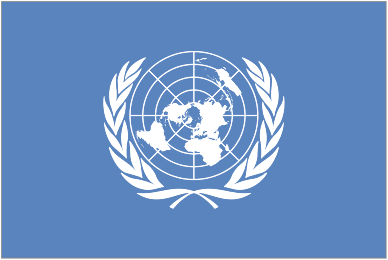
 1993 - Exhibition entitled "Bertha von Suttner in the mirror of the contemporary press" (Bertha von Suttner im Spiegel der zeitgenossischen) at the State Library (Staatsbibliothek zu Berlin/Preussischer Kulturbesitz) in Berlin (Germany).
1993 - Exhibition entitled "Bertha von Suttner in the mirror of the contemporary press" (Bertha von Suttner im Spiegel der zeitgenossischen) at the State Library (Staatsbibliothek zu Berlin/Preussischer Kulturbesitz) in Berlin (Germany).





|  1996 - Nobel Peace Walk, Wagga Wagga (Australia). "Historical and educational project paying tribute to those people who's [sic] life's work was to promote peace. The project's theme is 'peace for all time.' The walk was conceived by master stonemasons J Shephard & Son and commenced in 1996. It was inspired by their involvement with the design and construction of the [1993] Rotary Peace Monument [qv]." Images show individual monuments for Henri Dunant, Albert Schweitzer & Bertha von Suttner. 1996 - Nobel Peace Walk, Wagga Wagga (Australia). "Historical and educational project paying tribute to those people who's [sic] life's work was to promote peace. The project's theme is 'peace for all time.' The walk was conceived by master stonemasons J Shephard & Son and commenced in 1996. It was inspired by their involvement with the design and construction of the [1993] Rotary Peace Monument [qv]." Images show individual monuments for Henri Dunant, Albert Schweitzer & Bertha von Suttner.
|

 |
 1996 - "Die Rebellin: Bertha von Suttner" by Christian Gotz, Botschaften für unsere Zeit. Kvb, Dortmund (Germany). "They likened her to fire, him to water. She was the glamorous photographer, he was the writer with a conscience. Less than two weeks ago, Irene Vogt-Gotz [1940-2000] and her husband Christian Gotz [1941-2000] were among the most admired couples
in the prosperous German city of Dusseldorf. She took pictures of the rich and powerful for the UN; he was the biographer of Bertha von Suttner, the German equivalent of Emmeline Pankhurst [1858-1928]. ///
Against all the odds, both had been diagnosed with cancer within months of one another and, to the relief of the many people who loved them, they had recently announced that they had both beaten it. But then came the celebrations, and with them the end of their seemingly charmed existence - because those celebrations began on board Concorde flight number AF4590 from Paris. ///
When the doomed Air France flight climbed above Charles de Gaulle airport last week, a 200 ft plume of flames trailing from its port wing, the recovering Irene and Christian were on board. They had two minutes to reflect on their run of luck before it came down, disintegrating in a field outside Gonesse." [From The Independent, August 4, 2000] 1996 - "Die Rebellin: Bertha von Suttner" by Christian Gotz, Botschaften für unsere Zeit. Kvb, Dortmund (Germany). "They likened her to fire, him to water. She was the glamorous photographer, he was the writer with a conscience. Less than two weeks ago, Irene Vogt-Gotz [1940-2000] and her husband Christian Gotz [1941-2000] were among the most admired couples
in the prosperous German city of Dusseldorf. She took pictures of the rich and powerful for the UN; he was the biographer of Bertha von Suttner, the German equivalent of Emmeline Pankhurst [1858-1928]. ///
Against all the odds, both had been diagnosed with cancer within months of one another and, to the relief of the many people who loved them, they had recently announced that they had both beaten it. But then came the celebrations, and with them the end of their seemingly charmed existence - because those celebrations began on board Concorde flight number AF4590 from Paris. ///
When the doomed Air France flight climbed above Charles de Gaulle airport last week, a 200 ft plume of flames trailing from its port wing, the recovering Irene and Christian were on board. They had two minutes to reflect on their run of luck before it came down, disintegrating in a field outside Gonesse." [From The Independent, August 4, 2000]
|



|
 Date? - Schloss Harmannsdorf (Suttner Castle), Harmannsdorf (Austria). 27 km from central Vienna.
"Later owners of the castle, the family Suttner (Bertha von Suttner), and the family of the counts Abensperg and Traun (1934-75) were. The castle is now a veterinary research institute is located."
Now owned by "International Bertha von Suttner Association" and/or
Professor Erich Glawischnig (Schloss,
A-3713 Harmannsdorf,
Austria,
Tel. +4329848235.
E-mail: e.glawischnig@utanet.at. Date? - Schloss Harmannsdorf (Suttner Castle), Harmannsdorf (Austria). 27 km from central Vienna.
"Later owners of the castle, the family Suttner (Bertha von Suttner), and the family of the counts Abensperg and Traun (1934-75) were. The castle is now a veterinary research institute is located."
Now owned by "International Bertha von Suttner Association" and/or
Professor Erich Glawischnig (Schloss,
A-3713 Harmannsdorf,
Austria,
Tel. +4329848235.
E-mail: e.glawischnig@utanet.at.
|


 |
 May 27-29, 2005 -
"PEACE, PROGRESS, AND WOMEN: International Bertha-von-Suttner-Symposium," Schloss Harmannsdorf, Harmannsdorf (Austria). "The main scientific symposium of the commemorative year was held in the town of Eggenburg in May 2005. IPB
(International Peace Bureau) speakers included Cora Weiss (President), Verdiana Grossi (historical consultant). Both Silvi Sterr and Colin Archer had been involved in the planning process which took place under the direction of Prof. Peter van den Dungen of Bradford University, UK [upper image], and Prof Erich Glawischnig, current owner of the von Suttner residence at Harmannsdorf [lower image]." Among the papers presented was "Bertha von Suttner & the Nobel Peace Prize" by Irwin Abrams of Yellow Springs, Ohio (USA). It is published in "Peace, Progress, and Women" (LIT Publishing House, Berlin & Vienna, 2007). May 27-29, 2005 -
"PEACE, PROGRESS, AND WOMEN: International Bertha-von-Suttner-Symposium," Schloss Harmannsdorf, Harmannsdorf (Austria). "The main scientific symposium of the commemorative year was held in the town of Eggenburg in May 2005. IPB
(International Peace Bureau) speakers included Cora Weiss (President), Verdiana Grossi (historical consultant). Both Silvi Sterr and Colin Archer had been involved in the planning process which took place under the direction of Prof. Peter van den Dungen of Bradford University, UK [upper image], and Prof Erich Glawischnig, current owner of the von Suttner residence at Harmannsdorf [lower image]." Among the papers presented was "Bertha von Suttner & the Nobel Peace Prize" by Irwin Abrams of Yellow Springs, Ohio (USA). It is published in "Peace, Progress, and Women" (LIT Publishing House, Berlin & Vienna, 2007).
|

 |
 2005 - 100 Jahre Friedensnobelpreis Bertha von Suttner / Bertha van Suttner Nobel Peace Prize Centennial Coin (Germany). 2005 - 100 Jahre Friedensnobelpreis Bertha von Suttner / Bertha van Suttner Nobel Peace Prize Centennial Coin (Germany).
|
 |
 March 8, 2006 - Bertha von Suttner Building, Rue Wiertz, Brussels (Belgium). "On International World Women’s
Day, the Montoyer Building [built 1998] was renamed the Bertha von Suttner
Building by the European Economic & Social Committee." March 8, 2006 - Bertha von Suttner Building, Rue Wiertz, Brussels (Belgium). "On International World Women’s
Day, the Montoyer Building [built 1998] was renamed the Bertha von Suttner
Building by the European Economic & Social Committee."
|

 |
 2006 - Gedenktafel Berta von Suttner, Brussels (Belgium). Glazed stoneware &
stainless steel. 2006 - Gedenktafel Berta von Suttner, Brussels (Belgium). Glazed stoneware &
stainless steel.
|


 |
 2008 - Bertha von Suttner is selected as a main motif for a high value collectors' coin: the 2008 Europe Taler. The reverse shows important people in the history of Europe, including Bertha von Suttner. Also depicted in the coin are Martin Luther (symbolising the transition from the Middle Ages to the modern period); Antonio Vivaldi (exemplifying the importance of European cultural life); and James Watt (representing the industrialization of Europe, inventor of the first steam engine in the 18th century). 2008 - Bertha von Suttner is selected as a main motif for a high value collectors' coin: the 2008 Europe Taler. The reverse shows important people in the history of Europe, including Bertha von Suttner. Also depicted in the coin are Martin Luther (symbolising the transition from the Middle Ages to the modern period); Antonio Vivaldi (exemplifying the importance of European cultural life); and James Watt (representing the industrialization of Europe, inventor of the first steam engine in the 18th century).
|

 |
 May 9, 2007 - "Biographical plate" of Bertha von Suttner, Berges du Rhône, Lyon (France). "I was in Lyon this summer, running along the river, and right near [my] starting point was a big, high-mounted painting of Von Suttner, as a heroine of peace & resistance to fascism. At the end of my run, where I turned back, there was a similar painting of Marlene Dietrich!" Information courtesy of Prof. Lawrence Rosenwald 06Jan2013. /// Image of the von Suttner plate not found. Upper image shows plate of Dame Ellen MacArthur (UK). Lower image shows the Berges du Rhône. /// "A walk along the Berges du Rhône is an activity undertaken by all who visit Lyon. ... A lesser known feature of Les Berges are the ‘Miroirs de Femmes au Fil de l’Eau’ (Mirrors of Women over Water). A collection of biographical plates, Les Miroirs highlight the life and achievements of 12 exceptional European women." /// "Le projet "Miroir de femmes au fil de l’eau" porté par la Ville de Lyon a pour objectif de soutenir la dynamique citoyenne européenne auprès des Lyonnais...
De là est née l’idée de rendre hommage aux femmes qui ont contribué à forger l’identité et la culture européenne en donnant leurs noms aux Berges reconquises.
Douze pays ont été retenus, selon l’antériorité de leur adhésion à la Communauté Européenne et le nombre de ressortissants nationaux présents à Lyon.
* Dame Ellen MACARTHUR : Grande-Bretagne,
* Marlène DIETRICH : Allemagne,
* Clara CAMPOAMOR : Espagne,
* Renata TEBALDI : Italie,
* Amalia RODRIGUES : Portugal,
* Reine ASTRID : Belgique,
* Aletta JACOBS : Pays-Bas,
* Melina MERCOURI : Grèce,
* Marie SKLODOWSKA-CURIE : Pologne,
* Karen BLIXEN : Danemark,
* Anna LINDH : Suède,
* Bertha VON SUTTNER : Autriche.
Inaugurées le jour de la Fête de l’Europe et le jour de l'inauguration officielle des Berges du Rhône, le 9 mai 2007, les 12 plaques qui jalonnent les 5 km de berges leur rendent hommage et permettent aux promeneurs de découvrir la vie et l'œuvre de ces grandes femmes européennes." May 9, 2007 - "Biographical plate" of Bertha von Suttner, Berges du Rhône, Lyon (France). "I was in Lyon this summer, running along the river, and right near [my] starting point was a big, high-mounted painting of Von Suttner, as a heroine of peace & resistance to fascism. At the end of my run, where I turned back, there was a similar painting of Marlene Dietrich!" Information courtesy of Prof. Lawrence Rosenwald 06Jan2013. /// Image of the von Suttner plate not found. Upper image shows plate of Dame Ellen MacArthur (UK). Lower image shows the Berges du Rhône. /// "A walk along the Berges du Rhône is an activity undertaken by all who visit Lyon. ... A lesser known feature of Les Berges are the ‘Miroirs de Femmes au Fil de l’Eau’ (Mirrors of Women over Water). A collection of biographical plates, Les Miroirs highlight the life and achievements of 12 exceptional European women." /// "Le projet "Miroir de femmes au fil de l’eau" porté par la Ville de Lyon a pour objectif de soutenir la dynamique citoyenne européenne auprès des Lyonnais...
De là est née l’idée de rendre hommage aux femmes qui ont contribué à forger l’identité et la culture européenne en donnant leurs noms aux Berges reconquises.
Douze pays ont été retenus, selon l’antériorité de leur adhésion à la Communauté Européenne et le nombre de ressortissants nationaux présents à Lyon.
* Dame Ellen MACARTHUR : Grande-Bretagne,
* Marlène DIETRICH : Allemagne,
* Clara CAMPOAMOR : Espagne,
* Renata TEBALDI : Italie,
* Amalia RODRIGUES : Portugal,
* Reine ASTRID : Belgique,
* Aletta JACOBS : Pays-Bas,
* Melina MERCOURI : Grèce,
* Marie SKLODOWSKA-CURIE : Pologne,
* Karen BLIXEN : Danemark,
* Anna LINDH : Suède,
* Bertha VON SUTTNER : Autriche.
Inaugurées le jour de la Fête de l’Europe et le jour de l'inauguration officielle des Berges du Rhône, le 9 mai 2007, les 12 plaques qui jalonnent les 5 km de berges leur rendent hommage et permettent aux promeneurs de découvrir la vie et l'œuvre de ces grandes femmes européennes."
|
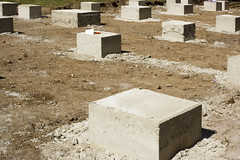 |
 2009 - Bertha-von-Suttner-Realschule, Köln-Vogelsang (Germany). Image shows "foundations made by Bwa.
Erection of container buildings. Because of technical conversion of the existing building structures, it was necessary that classes be temporarily held in containers. The construction work was during the school holidays from July - conducted August 2009. The container had to be surveyed the area and some foundations are created. We have made the self-calibration and monitor the further work of the construction phase and coordinated. The entry of students into the container could take place on time to start school." 2009 - Bertha-von-Suttner-Realschule, Köln-Vogelsang (Germany). Image shows "foundations made by Bwa.
Erection of container buildings. Because of technical conversion of the existing building structures, it was necessary that classes be temporarily held in containers. The construction work was during the school holidays from July - conducted August 2009. The container had to be surveyed the area and some foundations are created. We have made the self-calibration and monitor the further work of the construction phase and coordinated. The entry of students into the container could take place on time to start school."
|
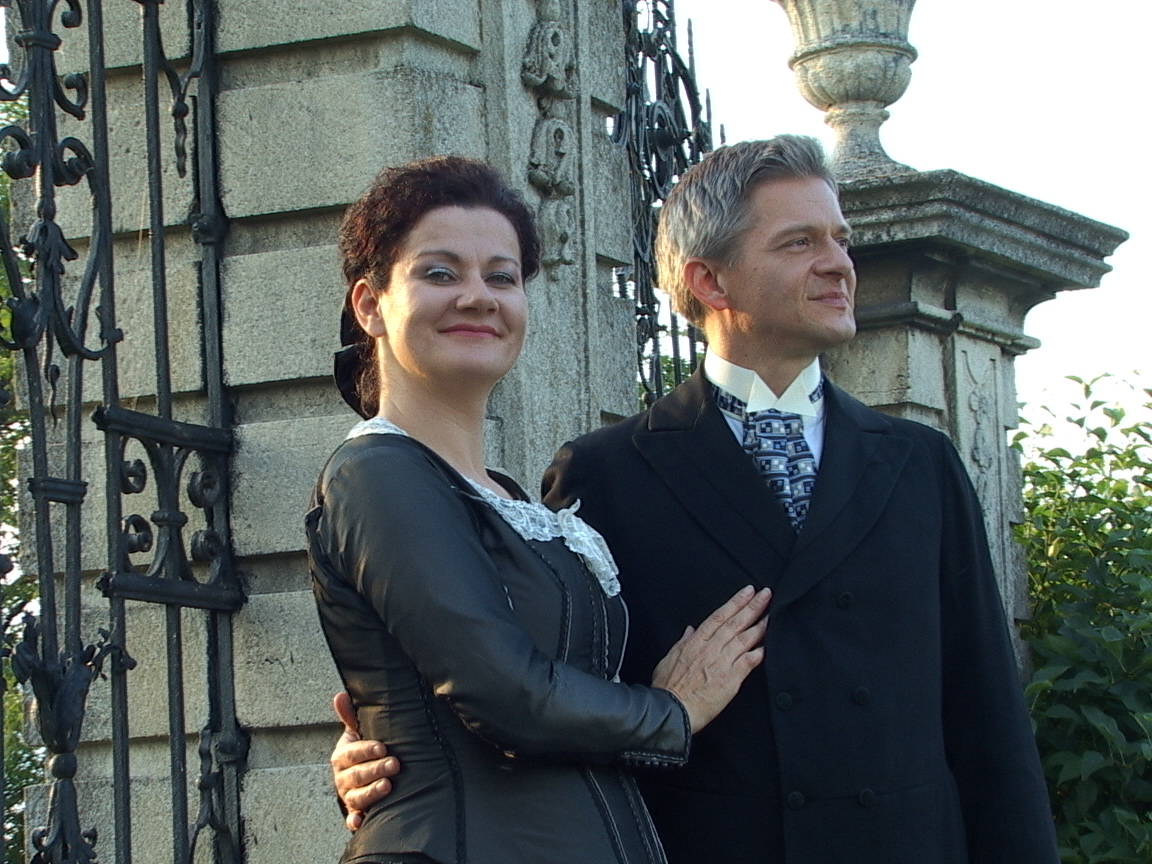

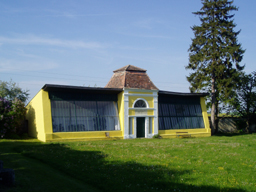

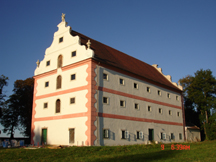 |
 June 18, 19, 25 & 26, July 2 & 3, 2010 -
Produktionen Zu Gast bei Bertha von Suttner
"PEACE PLEASE! Ein Bertha von Suttner Journal,"
Ein Erlebnistheater in Schloss Harmannsdorf (Austria). Peace acts
sich entwerfen können – ein Simone de Beauvoir Update
Hannah. Verstehen. Ein Dialog mit Hannah Arendt [1906-1975].
Planet Austria
Zu Gast bei Bertha von Suttner.
Gemeinde Burgschleinitz-Kühnring (Bezirk Horn).
Eine Produktion von portraittheater
in Kooperation mit dem Internationen Bertha von Suttner Verein
im Rahmen des Viertelfestival Niederösterreich - Waldviertel 2010.
Starring Anita Zieher.
"Liebe Freundin, lieber Freund,
es ist mir, Bertha von Suttner, eine grosse Freude, Sie zu einem gemeinsamen Beisammensein an meinem früheren Wohnsitz in Schloss Harmannsdorf einzuladen. Hier habe ich..."
Der komplette Einladungsbrief (PDF, 60kb).
Mit dem Projekt "Zu Gast bei Bertha von Suttner" wird die Friedensnobelpreisträgerin Bertha von Suttner (1843 - 1914) erneut in den Mittelpunkt einer Theaterproduktion gestellt. Mit Gastfreundschaft als unmittelbarem Ausdruck von Respekt greift portraittheater das Motto des Viertelfestival NO - Waldviertel 2010 auf.
Das Publikum erwartet ein ganz besonderes Theatererlebnis: Bertha von Suttner lädt rund 40 Gaste ein, einen Abend im privaten Rahmen in Schloss Harmannsdorf - ihrem ehemaligen Wohnsitz in der Nähe von Horn - zu verbringen. In Form eines Stationentheaters auf dem Schlossgelände haben die Gäste die Gelegenheit, die Gastgeberin sowie ihren Ehemann Artur Gundaccar von Suttner, ihren Freund Alfred Nobel, ihre Mutter Sophie Gräfin Kinsky und andere kennen zu lernen und etwa aus deren Leben zu erfahren. Die Gaste erleben einen ereignisreichen Abend, bei dem sie miteinander ein Stück des Weges gehen, miteinander ins Gespräch kommen und den Abend mit einem gemeinsamen Essen ausklingen lassen. Erleben Sie Bertha von Suttner ganz privat! June 18, 19, 25 & 26, July 2 & 3, 2010 -
Produktionen Zu Gast bei Bertha von Suttner
"PEACE PLEASE! Ein Bertha von Suttner Journal,"
Ein Erlebnistheater in Schloss Harmannsdorf (Austria). Peace acts
sich entwerfen können – ein Simone de Beauvoir Update
Hannah. Verstehen. Ein Dialog mit Hannah Arendt [1906-1975].
Planet Austria
Zu Gast bei Bertha von Suttner.
Gemeinde Burgschleinitz-Kühnring (Bezirk Horn).
Eine Produktion von portraittheater
in Kooperation mit dem Internationen Bertha von Suttner Verein
im Rahmen des Viertelfestival Niederösterreich - Waldviertel 2010.
Starring Anita Zieher.
"Liebe Freundin, lieber Freund,
es ist mir, Bertha von Suttner, eine grosse Freude, Sie zu einem gemeinsamen Beisammensein an meinem früheren Wohnsitz in Schloss Harmannsdorf einzuladen. Hier habe ich..."
Der komplette Einladungsbrief (PDF, 60kb).
Mit dem Projekt "Zu Gast bei Bertha von Suttner" wird die Friedensnobelpreisträgerin Bertha von Suttner (1843 - 1914) erneut in den Mittelpunkt einer Theaterproduktion gestellt. Mit Gastfreundschaft als unmittelbarem Ausdruck von Respekt greift portraittheater das Motto des Viertelfestival NO - Waldviertel 2010 auf.
Das Publikum erwartet ein ganz besonderes Theatererlebnis: Bertha von Suttner lädt rund 40 Gaste ein, einen Abend im privaten Rahmen in Schloss Harmannsdorf - ihrem ehemaligen Wohnsitz in der Nähe von Horn - zu verbringen. In Form eines Stationentheaters auf dem Schlossgelände haben die Gäste die Gelegenheit, die Gastgeberin sowie ihren Ehemann Artur Gundaccar von Suttner, ihren Freund Alfred Nobel, ihre Mutter Sophie Gräfin Kinsky und andere kennen zu lernen und etwa aus deren Leben zu erfahren. Die Gaste erleben einen ereignisreichen Abend, bei dem sie miteinander ein Stück des Weges gehen, miteinander ins Gespräch kommen und den Abend mit einem gemeinsamen Essen ausklingen lassen. Erleben Sie Bertha von Suttner ganz privat!
|

| T
R
A
I
L |  Spring 2011? -
Vienna Peace Trail, Peace Matters (a project of the Konfliktkultur Association),Vienna (Austria). Described in "Discovering Peace in Vienna," a guide book...that "offers an unusual and exciting perspective on the city... Presents rich evidence of people throughout history who have lived and worked in Vienna and were engaged in different active peace & human rights fields in science, arts and political activities. Offers stories & pictures in several city walks, describing places where people lived and acted in their engagement for peace, human rights, improvement of general conditions of life & promotion of democratic development." Will undoubtedly include the Congress of Vienna in 1814-15, Bertha von Suttner [1843-1914], Alfred Fried [1864-1921], and the inauguration of the Universal Peace Federation (UPF) in 2005. Spring 2011? -
Vienna Peace Trail, Peace Matters (a project of the Konfliktkultur Association),Vienna (Austria). Described in "Discovering Peace in Vienna," a guide book...that "offers an unusual and exciting perspective on the city... Presents rich evidence of people throughout history who have lived and worked in Vienna and were engaged in different active peace & human rights fields in science, arts and political activities. Offers stories & pictures in several city walks, describing places where people lived and acted in their engagement for peace, human rights, improvement of general conditions of life & promotion of democratic development." Will undoubtedly include the Congress of Vienna in 1814-15, Bertha von Suttner [1843-1914], Alfred Fried [1864-1921], and the inauguration of the Universal Peace Federation (UPF) in 2005.
|
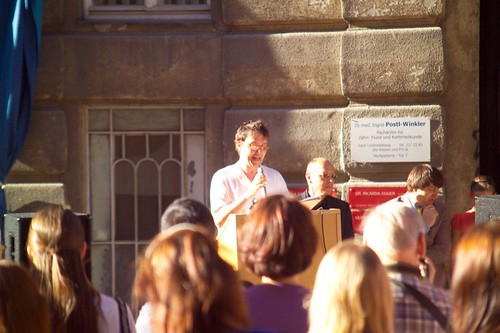
| P
L
A
Q
U
E |  May 25, 2011 - Memorial plaque for Alfred Hermann Fried, Widerhofergasse 5, 9th district, Vienna (Austria). At house in which Fried was living when he received the Nobel Peace Prize in 1911. Alfred Hermann Fried [1864-1921] was an Austrian Jewish pacifist, publicist, journalist & co-founder of the German peace movement. Shared Nobel prize with Tobias Asser) [1838-1913]. Fried was "the revolutionary pacifist, peace researcher & first peace journalist of international standing." The plaque is "his first Memorial in Vienna... More than 200 people and took part in the ceremony. Klaus Maria Brandauer unveiled the commemorative plaque at the fountain Hevenu Shalom choir sang." May 25, 2011 - Memorial plaque for Alfred Hermann Fried, Widerhofergasse 5, 9th district, Vienna (Austria). At house in which Fried was living when he received the Nobel Peace Prize in 1911. Alfred Hermann Fried [1864-1921] was an Austrian Jewish pacifist, publicist, journalist & co-founder of the German peace movement. Shared Nobel prize with Tobias Asser) [1838-1913]. Fried was "the revolutionary pacifist, peace researcher & first peace journalist of international standing." The plaque is "his first Memorial in Vienna... More than 200 people and took part in the ceremony. Klaus Maria Brandauer unveiled the commemorative plaque at the fountain Hevenu Shalom choir sang."
|




| E
X
P
O |  August 10-28, 2011 - Kyoto Museum for World Peace, Kyoto (Japan). Exhibit on Bertha von Suttner. Featuring presentation on August 20 by Prof. Peter van den Dungen entitled "Toward a Bertha von Suttner Peace Museum in Vienna." Click here for flier in Japanese (pdf format). Click here for the text of an interview with Prof. van den Dungen about Bertha von Suttner. August 10-28, 2011 - Kyoto Museum for World Peace, Kyoto (Japan). Exhibit on Bertha von Suttner. Featuring presentation on August 20 by Prof. Peter van den Dungen entitled "Toward a Bertha von Suttner Peace Museum in Vienna." Click here for flier in Japanese (pdf format). Click here for the text of an interview with Prof. van den Dungen about Bertha von Suttner.
|


| S
T
R
E
E
T |  2012? -
Bertha von Suttner-Ring, Vienna (Austria). "It is my goal, along with several others from the University of Vienna, to have that portion of the famous Ringstraße (Vienna's main historical boulevard) passing by the old University structure to be renamed in honor of Bertha von Suttner. It currently bears the name of Dr. Karl Lueger [1844-1910], the controversial historical mayor of 19th century Vienna, who was also an anti-Semite, but has primary place in his name with a statue to his honor [see lower image] elsewhere on the Ringstraße. Accordingly, and with all due respect to the Lueger history which is suitably memorialized, this new Bertha von Suttner-Ring section effects only a few address changes, would most likely be supported by both faculty and students of the university and would be the first woman so honored on Vienna's Ringstraße. It would underscore and revitalize the origins of the International Peace Bureau and its Austrian connection through Suttner. She and the IPB have been sadly forgotten in Vienna's city history." -- Prof. Dr. Robert von Dassanowsky, FRHistS, FRSA,
email belvederefilm@yahoo.com, Facebook http://www.facebook.com/group.php?gid=133431070025139. (Upper image shows the Dr. Karl Lueger-Ring near the main building of the University of Vienna on October 26, Austria's national holiday, when the Ringstraße is traditionally closed to traffic due to a military parade. Lower image shows statue of Dr. Karl Lueger in Dr.-Karl-Lueger-Platz.)
Click here for Facebook page "Aktion Suttner-Ring Vienna." 2012? -
Bertha von Suttner-Ring, Vienna (Austria). "It is my goal, along with several others from the University of Vienna, to have that portion of the famous Ringstraße (Vienna's main historical boulevard) passing by the old University structure to be renamed in honor of Bertha von Suttner. It currently bears the name of Dr. Karl Lueger [1844-1910], the controversial historical mayor of 19th century Vienna, who was also an anti-Semite, but has primary place in his name with a statue to his honor [see lower image] elsewhere on the Ringstraße. Accordingly, and with all due respect to the Lueger history which is suitably memorialized, this new Bertha von Suttner-Ring section effects only a few address changes, would most likely be supported by both faculty and students of the university and would be the first woman so honored on Vienna's Ringstraße. It would underscore and revitalize the origins of the International Peace Bureau and its Austrian connection through Suttner. She and the IPB have been sadly forgotten in Vienna's city history." -- Prof. Dr. Robert von Dassanowsky, FRHistS, FRSA,
email belvederefilm@yahoo.com, Facebook http://www.facebook.com/group.php?gid=133431070025139. (Upper image shows the Dr. Karl Lueger-Ring near the main building of the University of Vienna on October 26, Austria's national holiday, when the Ringstraße is traditionally closed to traffic due to a military parade. Lower image shows statue of Dr. Karl Lueger in Dr.-Karl-Lueger-Platz.)
Click here for Facebook page "Aktion Suttner-Ring Vienna."
|

 |  February 13, 2013 - Bertha von Suttner Stamp (Czech Republic). von Suttner was born in Prague on 9 June 1843. This stamp was issued in her 170th anniversary year. February 13, 2013 - Bertha von Suttner Stamp (Czech Republic). von Suttner was born in Prague on 9 June 1843. This stamp was issued in her 170th anniversary year.
|
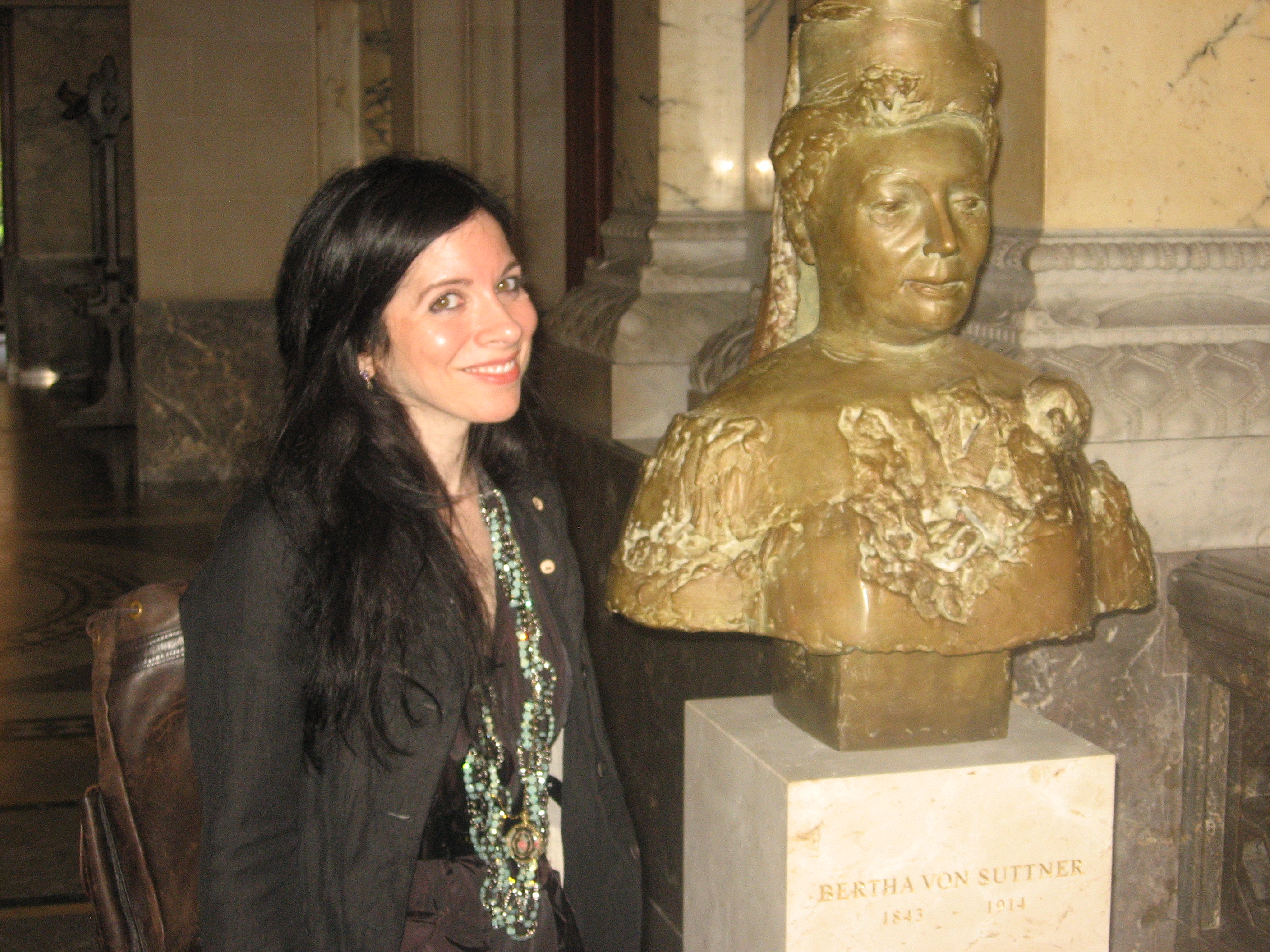 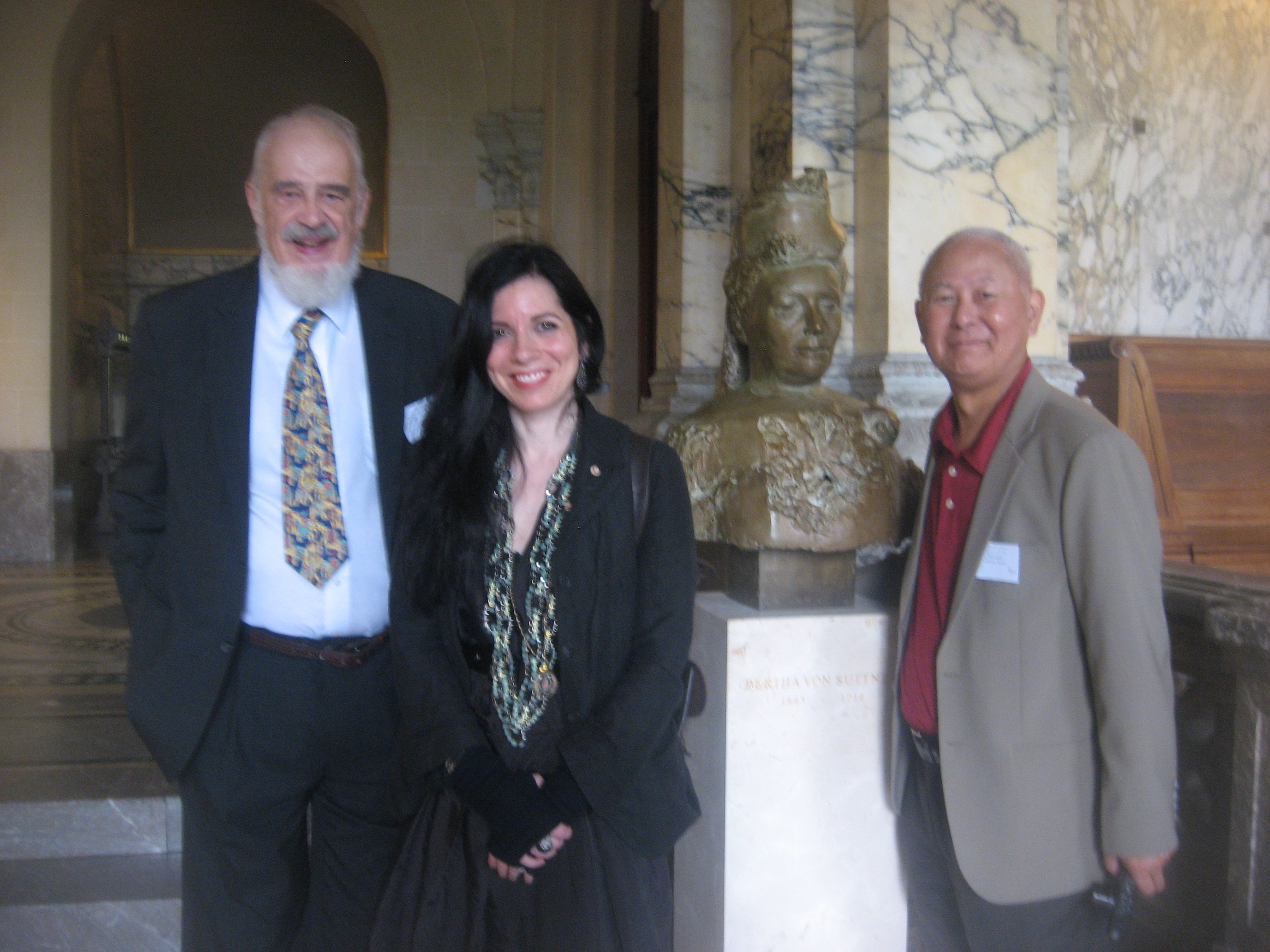
 |  August 28, 2013 - Bust of Countess Bertha von Suttner, Main Hall, Vredespaleis / Peace Palace, Carnegieplein 2, The Hague (Netherlands). Unveiled on exact centennial of the Peace Palace by another female Nobel Peace Prize laureate, Leymah Gbowee of Liberia. /// Left image by EWL shows Hope Elizabeth May with the bust on 3 September 2013. Right image shows Edward W. Lollis, Hope Elizabeth May & Roy Tamashiro. Not to be confused with another bust of von Suttner unveiled 6 days later in The Hague city hall (qv). August 28, 2013 - Bust of Countess Bertha von Suttner, Main Hall, Vredespaleis / Peace Palace, Carnegieplein 2, The Hague (Netherlands). Unveiled on exact centennial of the Peace Palace by another female Nobel Peace Prize laureate, Leymah Gbowee of Liberia. /// Left image by EWL shows Hope Elizabeth May with the bust on 3 September 2013. Right image shows Edward W. Lollis, Hope Elizabeth May & Roy Tamashiro. Not to be confused with another bust of von Suttner unveiled 6 days later in The Hague city hall (qv).  
|
It took 100 years for von Suttner -- the woman most importantly identified with the Peace Palace and the first female to receive a Nobel Peace Prize -- to be memorialized in the Peace Palace. The new bust is shown or mentioned on several web sites, but I cannot find any which identifies the sculptor! Another overlooked woman?
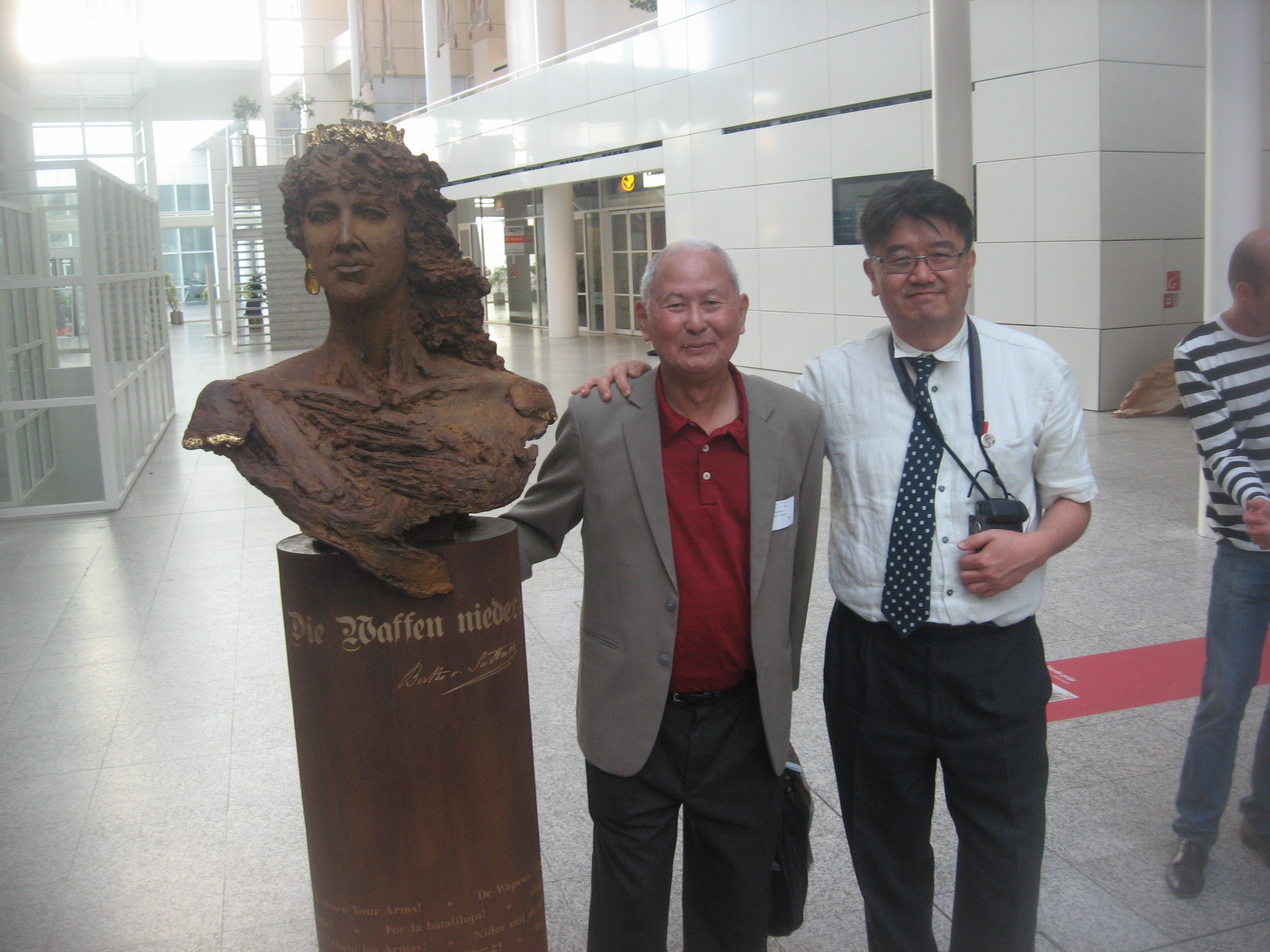 
 |  September 3, 2013 - Unveiling bust of Bertha von Suttner, City Hall, The Hague (Netherlands). "As part of our Centennial celebrations we are honored to [welcome] the beautiful bust of Bertha von Suttner [1843-1914] lovingly sculpted by Ingrid Rollema. On the June 21, 2013, we celebrated the 99th anniversary of von Suttner's death." /// Left image by EWL shows Roy Tamashiro & Fumi Hoshino with the bust. Right image by Hope Elizabeth May shows the artist in her studio; apparently she permitted no in-focus photo of the best before its unveiling. /// Not to be confused with another bust of von Suttner unveiled 6 days earlier in the Peace Palace (qv). September 3, 2013 - Unveiling bust of Bertha von Suttner, City Hall, The Hague (Netherlands). "As part of our Centennial celebrations we are honored to [welcome] the beautiful bust of Bertha von Suttner [1843-1914] lovingly sculpted by Ingrid Rollema. On the June 21, 2013, we celebrated the 99th anniversary of von Suttner's death." /// Left image by EWL shows Roy Tamashiro & Fumi Hoshino with the bust. Right image by Hope Elizabeth May shows the artist in her studio; apparently she permitted no in-focus photo of the best before its unveiling. /// Not to be confused with another bust of von Suttner unveiled 6 days earlier in the Peace Palace (qv).
 
|

 |  September 3, 2013 - Release of the book "The Stars of Eternal Truth and Right: Bertha von Suttner's Campaign for Peace, Social Justice, and Womanhood," City Hall, The Hague (Netherlands). By Arthur C.G.M. Eyffinger, Wolf Legal Publishers, Oisterwijk (Netherlands), 216 pages. "The substance of this book captures the gist of her views & ideals by way of hundreds of citations gathered from her Memoirs, Diaries & Correspondence, and handpicked from the tracts, novels & papers that constitute the rich yield of her unstoppable scholarly, literary & journalistic endeavours. The sum total is a fascinating portrait of an intriguing woman & public figure, a steadfast advocate of Women`s Lib & the Cassandra of Peace on the eve of the Guns of August. Dr. Arthur Eyffinger (The Hague, 1947) is classicist & law historian." September 3, 2013 - Release of the book "The Stars of Eternal Truth and Right: Bertha von Suttner's Campaign for Peace, Social Justice, and Womanhood," City Hall, The Hague (Netherlands). By Arthur C.G.M. Eyffinger, Wolf Legal Publishers, Oisterwijk (Netherlands), 216 pages. "The substance of this book captures the gist of her views & ideals by way of hundreds of citations gathered from her Memoirs, Diaries & Correspondence, and handpicked from the tracts, novels & papers that constitute the rich yield of her unstoppable scholarly, literary & journalistic endeavours. The sum total is a fascinating portrait of an intriguing woman & public figure, a steadfast advocate of Women`s Lib & the Cassandra of Peace on the eve of the Guns of August. Dr. Arthur Eyffinger (The Hague, 1947) is classicist & law historian." 
|

|
 September 21, 2013 - Statue of Bertha von Suttner , Corner of Bertha-von-Suttner-Platz & Sandkaule, Bonn (Germany). "
Twice had to Mayor Jürgen Nimptsch, District Mayor Jürgen Kollig, artist Sirpa Masalin and heath contactor, Chair of the Women's Network for Peace, strong pull on the rainbow colored peace flag, then the new memorial stele was finally unveiled in honor of the Nobel Peace Prize laureate Bertha von Suttner. Among other descendants of the peace activist - - citizens & the public on Saturday the International Day of Peace, the monument was officially handed over.
2.50 meters high, 40 inches thick [sic] & about 600 kilograms is the stainless steel pillar, showing the contours of a stylized female body. On the front it bears the inscription "1843-1914 Bertha von Suttner, Nobel Peace Prize 1905."
'After all that we could bring in experience, it is the first stele throughout Germany, Bertha von Suttner publicly acknowledges,' Nimptsch said. The place where the destruction of the Second World War were so clearly visible, was a good place to remind you of the Nobel Peace Prize.
'It was a long cherished desire to leave Bertha von Suttner be fresh in the minds of the people again,' said contactor. The stele is the 200th 'Kansa sculpture' by Finnish artist Masalin. 'Kansas' is Finnish for 'people's.' Sculptures are intended to remind us that we are all equal, said Masalin.
Since 2005, the Women's Network for Peace is an initiative for an honor Suttner. Could be financed, the 10,000-euro project using donations. To commemorate the life & work of Bertha von Suttner, the network is planning events in 2014. It is not only the year of the outbreak of the First World War, but also the year of death Suttner." (Google translation). Information courtesy of Peter van den Dungen. September 21, 2013 - Statue of Bertha von Suttner , Corner of Bertha-von-Suttner-Platz & Sandkaule, Bonn (Germany). "
Twice had to Mayor Jürgen Nimptsch, District Mayor Jürgen Kollig, artist Sirpa Masalin and heath contactor, Chair of the Women's Network for Peace, strong pull on the rainbow colored peace flag, then the new memorial stele was finally unveiled in honor of the Nobel Peace Prize laureate Bertha von Suttner. Among other descendants of the peace activist - - citizens & the public on Saturday the International Day of Peace, the monument was officially handed over.
2.50 meters high, 40 inches thick [sic] & about 600 kilograms is the stainless steel pillar, showing the contours of a stylized female body. On the front it bears the inscription "1843-1914 Bertha von Suttner, Nobel Peace Prize 1905."
'After all that we could bring in experience, it is the first stele throughout Germany, Bertha von Suttner publicly acknowledges,' Nimptsch said. The place where the destruction of the Second World War were so clearly visible, was a good place to remind you of the Nobel Peace Prize.
'It was a long cherished desire to leave Bertha von Suttner be fresh in the minds of the people again,' said contactor. The stele is the 200th 'Kansa sculpture' by Finnish artist Masalin. 'Kansas' is Finnish for 'people's.' Sculptures are intended to remind us that we are all equal, said Masalin.
Since 2005, the Women's Network for Peace is an initiative for an honor Suttner. Could be financed, the 10,000-euro project using donations. To commemorate the life & work of Bertha von Suttner, the network is planning events in 2014. It is not only the year of the outbreak of the First World War, but also the year of death Suttner." (Google translation). Information courtesy of Peter van den Dungen.  
|




| M
U
S
E
U
M |  June 21, 2014? - Bertha von Suttner Museum, Vienna (Austria). Proposed by Prof. Peter van den Dungen (July 2010) in "Towards a Bertha von Suttner Peace Museum in Vienna (1914-2014)," "Im Prisma - Bertha von Suttner: Die Waffen nieder!," Johann Georg Lughofer (Hg.), Edition Art Science, St. Wolfgangpp, Vienna (Austria), pp. 211-236. Prof. van den Dungen recommended opening a peace museum on the centennial of von Suttner's death in 2014 which "would inform the visitor of the widespread and global phenomenon that is the peace movement of today." June 21, 2014? - Bertha von Suttner Museum, Vienna (Austria). Proposed by Prof. Peter van den Dungen (July 2010) in "Towards a Bertha von Suttner Peace Museum in Vienna (1914-2014)," "Im Prisma - Bertha von Suttner: Die Waffen nieder!," Johann Georg Lughofer (Hg.), Edition Art Science, St. Wolfgangpp, Vienna (Austria), pp. 211-236. Prof. van den Dungen recommended opening a peace museum on the centennial of von Suttner's death in 2014 which "would inform the visitor of the widespread and global phenomenon that is the peace movement of today."
|
 
 |
 Future? - Memorial in Gotha (Germany). Never realized. "von Suttner was a member of the Austrian Association 'The Flame,' the cremation propagated. Sie förderte den Bau des ersten deutschen Krematoriums in Gotha und verfügte testamentarisch, dass ihr Leichnam nach Gotha überführt und dort verbrannt werden solle. It promoted the construction of the first German crematorium in Gotha, and decreed in his will that her body should be burnt and there transferred to Gotha. Die Urne mit ihrer Asche wird noch heute im dortigen Columbarium aufbewahrt. The urn with her ashes are still in there Columbarium kept." Future? - Memorial in Gotha (Germany). Never realized. "von Suttner was a member of the Austrian Association 'The Flame,' the cremation propagated. Sie förderte den Bau des ersten deutschen Krematoriums in Gotha und verfügte testamentarisch, dass ihr Leichnam nach Gotha überführt und dort verbrannt werden solle. It promoted the construction of the first German crematorium in Gotha, and decreed in his will that her body should be burnt and there transferred to Gotha. Die Urne mit ihrer Asche wird noch heute im dortigen Columbarium aufbewahrt. The urn with her ashes are still in there Columbarium kept."
|
SUMMARY BIOGRAPHY FROM WICKIPEDIA
Bertha Felicitas Sophie Freifrau von Suttner (Baroness Bertha von Suttner, Gräfin (Countess) Kinsky von Wchinitz und Tettau), 9 June 1843 - 21 June 1914, was an Austrian novelist, radical (organizational) pacifist, and the first woman to be a Nobel Peace Prize laureate.
She was born in Prague, Bohemia, the daughter of an impoverished Austrian Field Marshal, Franz-Josef Graf Kinsky von Wchinitz und Tettau, and wife Sophie von Körner, and governess to the wealthy Suttner family from 1873. She had an older brother, Arthur Franz Graf Kinsky von Wchinitz und Tettau. She became engaged to engineer and novelist Arthur Gundaccar Freiherr von Suttner (who died on December 10, 1902), but his family opposed the match, and she answered an advertisement from Alfred Nobel in 1876 to become his secretary-housekeeper at his Paris residence. She only remained a week before returning to Vienna and secretly marrying Arthur on June 12, 1876.
Suttner became a leading figure in the peace movement with the publication of her novel, Die Waffen nieder! ("Lay Down Your Arms!") in 1889 and founded an Austrian pacifist organization in 1891. She gained international repute as editor of the international pacifist journal Die Waffen nieder!, named after her book, from 1892 to 1899. Her pacifism was influenced by the writings of Henry Thomas Buckle, Herbert Spencer, and Charles Darwin. Though her personal contact with Alfred Nobel had been brief, she corresponded with him until his death in 1896, and it is believed that she was a major influence in his decision to include a peace prize among those prizes provided in his will, which she won in 1905.
SUMMARY BIOGRAPHY FROM SWARTHMORE COLLEGE PEACE COLLECTION
Bertha von Suttner was born Bertha Sophia Felicita Countess Kinsky von Chinic und Tettau in 1843 in Prague. Her father was Count Franz Joseph Kinsky, a field marshall and chamberlain to Austria's Emperor Franz Joseph I, who died shortly before Bertha was born. Though the family was impoverished, she was well-read, educated at home by governesses, proficient in languages, was taught the social graces, an exceptional pianist, and studied voice in Paris, Baden-Baden and Milan.
However, by the time she was in her early 30s, Bertha decided to find a job to support herself and she was hired in 1873 by Baron Karl von Suttner as governess to his four daughters. It was there that she met the Baron's son, Arthur Gundaccar. They fell in love and wished to marry, but both families opposed it, and Bertha was forced to find other work. She answered an advertisement from Alfred Nobel in Paris, who, in the autumn of 1875, was looking for a secretary and manager of his household. Nobel was a multi-millionaire from his discovery and manufacture of dynamite, but he was also a humanitarian who promoted many good causes.
Suttner's position with Nobel lasted less than two weeks as she decided that she could not live without Arthur. They were married secretly on June 12, 1876 and moved to the Caucasus. Over the next years they eked out a living at various jobs, at the same time enriching their intellectual life by reading widely in science, philosophy and history. During this time the Suttners wrote and had published six novels, as well as a number of articles. In 1885, Arthur and Bertha were reconciled with his family and were offered a permanent suite in the von Suttner castle in Vienna.
It was during a visit to Paris in 1887, that Bertha learned for the first time of the International Peace and Arbitration Association, based in London, whose goal was the establishment of an international court of arbitration. She promptly joined the Association and became its leading spokesperson. In the hopes of reaching a wider audience, she researched the war, talking to army surgeons, field officers and others who graphically described the grim realities of war. She used this material in her 1891 novel Lay Down Your Arms. It's definite anti-war flavor shocked her contemporaries, but it also received wide popular acclaim in many countries. Bertha published a manifesto in 1891 which attracted the attention of many peace sympathizers, and led to the formation of the Austrian Peace Society. She also helped establish the German Peace Association, the International Peace Bureau in Geneva in 1893, and the Hungarian Peace Society in 1896. She is credited with being the first woman political journalist in the German language. Also, in 1899 she held a salon in conjunction with the First Hague Peace Conference (Netherlands), in which she and other peace advocates convinced delegates to make establishing a structure for resolving international conflict their primary concern. This was the first known international lobby effort for peace that was effective.
Through the years, Bertha corresponded with and visited Alfred Nobel. She urged him to prove his support for her goals by establishing a prize for peace. This led to his endowment in his will for prizes to be given each year for achievements in physics, chemistry, medicine and physiology, literature, and for work toward peace. Bertha was awarded the Nobel Peace Prize in 1905.
Bertha von Suttner died on June 21,1914, one week before the first world war broke out.
FROM ENCYCLOPEDIA OF WORLD BIOGRPHY
Austrian writer and activist Bertha von Suttner (1843-1914) became a leading figure in peace activism at the turn of the twentieth century with the publication of her anti-war novel, Lay Down Your Arms. She continued her efforts as a public speaker and played a key role in the formation of the first Hague Peace Conference and the Nobel Peace Prize. For her efforts in the peace movement, she received the Nobel Peace Prize in 1905.
Bertha von Suttner was a leading figure in the growing peace movement at the end of the nineteenth century in Europe. Suttner used her literary talents to produce the 1889 political novel Die Waffen nieder, or Lay DownYour Arms; a call for disarmament, the book became a best-seller and was translated into a number of languages. The activist also promoted world peace by helping to organize the first Hague PeaceConference and encouraging her friend, Alfred Nobel, to create the internationally respected Nobel Peace Prize. Her many activities helped to remove the labels of "utopians" and unrealistic "idealists" from those involved in peace activism by gaining the support of respected world leaders and intellectuals for the movement.
Suttner was born as the Countess Bertha Kinsky on June 9, 1843. An only child, she came from a noble military family of Prague in what was then the Austro-Hungarian Empire. Her father, Count Joseph Kinsky, was a field marshal who died before her birth. Her mother, a relative of the poet Joseph von Korner, was left with a modest income after the death of her husband, and the limited funds were strained even further by her compulsive gambling at the fashionable casinos of Europe. She did find money, however, to provide her daughter with governesses, who instructed her in French and English, as well as singing lessons. As a teenager, Suttner had dreams of becoming an opera singer, but after a while, she realized that her voice was not adequate for such a career. She instead turned to academics, reading the works of the ancient Greek philosopher Plato and the German scientist Alexander von Humbolt by the time she was 16. She also taught herself Italian. She enjoyed a reputation as a great beauty, and supposedly her hand was sought in marriage by a prince when she was only 13. But she remained fairly isolated, with few companions other than her mother, well into her adult years.
Because of her mother's financial situation, Suttner was finally obliged to seek employment to support herself. At the age of 30 she became a governess in the home of the Baron and Baroness von Suttner. Their 23-year-old son, Arthur, was soon attracted to the older woman, and the two fell in love. Although the young man's sisters were very pleased by the romance, his mother was not. Upon discovering her son's attachment to Suttner, she found a new position for the governess in the distant city of Paris. There Suttner became the secretary and housekeeper for Alfred Nobel, the Swedish scientist who had invented dynamite. Only a week after she arrived in Paris, Nobel left for a trip to Sweden at the request of the king of that country; Suttner was also called out of town. During this time she received a telegram from Arthur von Suttner asking her to marry him. They met in Vienna and were secretly married before departing for a honeymoon in the Caucasus region of Russia.
Estranged from her husband's family, the couple stayed for nine years in the Caucasus, remaining as guests and employees of a friend who was a prince of the region. Suttner served as an instructor in music and languages, while her husband worked as an architect. They both were also welcomed as peers at the prince's social events, where they fraternized with the local aristocracy. Her husband eventually began to write articles that were successfully published in Austrian newspapers. Inspired by his success, Suttner also began to write and was encouraged when she published her first essay under a pseudonym. She soon attempted a longer work, and in 1883 published her first novel, Inventarium einer Seele, or Inventory of a Soul, which drew notice in literary circles. The couple decided that they would be able to make a living as writers and returned to Austria in May of 1885. There they joined the von Suttner family, who had forgiven them for their marriage.
Suttner continued to produce acclaimed works, including Daniela Dormes in 1886 and Das Maschinenzeitalter: Zukunftsvorlesungen uber unsere Zeit in 1889. Her books were distinguished by both moral views and an interest in scientific and philosophical ideas. In fact, sensing that the scientific themes of Das Maschinenzeitalter would not be taken seriously if published under a woman's name at that time, Suttner released the book under the pseudonym "Jemand," or "anyone." The book did sell well and provided Suttner and her husband with enough money to move to Paris.
In Paris, Suttner was reintroduced to Nobel, who in turn brought her and her husband in contact with members of leading social and intellectual circles. It was shortly after arriving in Paris that the couple learned about the London-based International Peace and Arbitration Society. Suttner was immediately drawn to the goals of the organization and decided to devote all her energies to this cause. She realized that she could use her literary talents to spread the message of peace to many people through a work of fiction and began writing her best-known work, Lay Down Your Arms. The anti-war themes of the book were considered controversial by publishers, and many refused to handle it. When it finally was accepted by a publisher, a number of changes were requested to make the work more socially acceptable. Suttner allowed a number of cuts and rewrites to be made to her manuscript, but she refused to change the title. Upon the book's debut in 1892, it exceeded its publisher's expectations by becoming a best-seller. Suttner received generous praise from a number of luminaries, including Russian novelist Leo Tolstoy, who compared the work's influence on the peace movement to the impact of American author Harriet Beecher Stowe's Uncle Tom's Cabin on the anti-slavery movement.
The book's success brought Suttner into the forefront of the anti-war movement. She was named president of the Austrian Peace Society and with the journalist Alfred Hermann Fried began a popular monthly journal, entitled Lay Down Your Arms, that detailed developments and activities in the peace movement for eight years. She participated in the first Hague Peace Conference, an event that marked a major victory for peace activists. The event was attended by high-ranking officials from countries such as the United States, Britain, and France and gave credibility to the peace efforts that had often been dismissed as unrealistic and naive by critics. Suttner herself was a featured speaker at theconference and was well-received by her admiring audience.
After the death of her husband in 1902, Suttner attempted to overcome her loss by working even harder to spread the message of peace. She continued writing and attended numerous conferences and meetings on the subject. She launched a speaking tour of the United States in 1904, during which she met President Theodore Roosevelt and visited Quaker communities that offered an inspiring example of life devoted to non-violence. She also saw hope for world peace in international developments of the time, such as the British movement to give former colonies Commonwealth status and the changes that seemed likely to follow the death of the aging Austrian emperor. For her efforts to promote the ideals of a peaceful world society, Suttner was awarded the Nobel Peace Prize in 1905.
Suttner died of stomach cancer on June 21, 1914. Only weeks after her death, the assassination of the heir to the Austrian empire launched World War I, an event that no doubt would have brought great sorrow to the advocate of peace. Despite such a turn of events, Suttner's contributions to the peace movement were not in vain. Her writings and organizational efforts led to a number of success in the struggle for peace, particularly by gaining support for nonviolent ideals among the general public as well as political and intellectual figures. The Hague Peace Conferences and the Nobel Peace Prize have become annual traditions that sustain the hope of peace to which Suttner devoted her life.
NOBEL COMMITTEE BIOGRAPHY
Baroness Bertha Felicie Sophie von Suttner (June 9, 1843-June 21, 1914), born Countess Kinsky in Prague, was the posthumous daughter of a field marshal and the granddaughter, on her mother's side, of a cavalry captain. Raised by her mother under the aegis of a guardian who was a member of the Austrian court, she was the product of an aristocratic society whose militaristic traditions she accepted without question for the first half of her life and vigorously opposed for the last half.
As a girl and young adult, Bertha studied languages and music (at one time aspiring to an operatic career), read voraciously, and enjoyed an active social life enlivened by travel.
At thirty, feeling she could no longer impose on her mother's dwindling funds, she took a position in Vienna as teacher-companion to the four daughters of the Suttner household. Here she met her future husband, the youngest son of the family. In 1876 she left for Paris to become Alfred Nobel's secretary but returned, after only a brief stay, to marry Baron Arthur Gundaccar von Suttner. Because of the Suttners' strong disapproval of the marriage, the young couple left immediately for the Caucasus where for nine years they earned an often precarious living by giving lessons in languages and music and eventually, and more successfully, by writing.
During this period the Baroness produced Es Löwos, a poetic description of their life together; four novels; and her first serious book, Inventarium einer Seele [Inventory of a Soul], in which she took stock of her thoughts and ideas on what she and her husband had been reading together, especially in evolutionist authors such as Darwin and Spencer; included is the concept of a society that would achieve progress though achieving peace.
In 1885, welcomed by the Baron's now relenting family, the Suttners returned to Austria where Bertha von Suttner wrote most of her books, including her many novels. Their life was oriented almost solely toward the literary until, through a friend, they learned about the International Arbitration and Peace Association1 in London and about similar groups on the Continent, organizations that had as an actual working objective what they had now both accepted as an ideal: arbitration and peace in place of armed force. Baroness von Suttner immediately added material on this to her second serious book, Das Maschinenzeitalter [The Machine Age] which, when published early in 1889, was much discussed and reviewed. This book, criticizing many aspects of the times, was among the first to foretell the results of exaggerated nationalism and armaments.
Wanting to «be of service to the Peace League... [by writing] a book which should propagate its ideas»2, Bertha von Suttner went to work at once on a novel whose heroine suffers all the horrors of war; the wars involved were those of the author's own day on which she did careful research. The effect of Die Waffen nieder [Lay Down Your Arms], published late in 1889, was consequently so real and the implied indictment of militarism so telling that the impact made on the reading public was tremendous. And from this time on, its author became an active leader in the peace movement, devoting a great part of her time, her energy, and her writing to the cause of peace - attending peace meetings and international congresses, helping to establish peace groups, recruiting members, lecturing, corresponding with people all over the world to promote peace projects.
In 1891 she helped form a Venetian peace group, initiated the Austrian Peace Society of which she was for a long time the president, attended her first international peace congress, and started the fund needed to establish the Bern Peace Bureau.
In 1892, with A. H. Fried, she initiated the peace journal Die Waffen Nieder, remaining its editor until the end of 1899 when it was replaced by the Friedenswarte (edited by Fried) to which she regularly contributed comments on current events (Randglossen zur Zeitgeschichte) until she died. Also in 1892 she promised Alfred Nobel to keep him informed on the progress of the peace movement and, if possible, to convince him of its effectiveness. No doubt she felt that she was beginning to succeed when she received a letter from him in January of 1893, telling her about a peace prize he hoped to found, one which, after his death in 1896, his will showed he had indeed established 3.
Bertha von Suttner, along with her husband, worked hard to gain support for the Czar's Manifesto and the Hague Peace Conference of 1899, arranging public meetings, forming committees, lecturing. She sent accounts of the Conference itself to the Neue Freie Presse and to other papers, in other countries, and in the following year wrote articles and initiated meetings to popularize the idea of the Permanent Court of Arbitration set up by the Conference.
Although grief-stricken after her husband's death in 1902, she determined to carry on the work which they had so often done together and which he had asked her to continue.
She now left her quiet retirement in Vienna only on peace missions, which often included arduous speaking tours. She continued to write, but only for the cause of peace. By 1905 when she received the Nobel Peace Prize - at a fortuitous time financially - she was widely thought of as sharing the leadership of the peace movement with the venerable Passy. In the years that followed she played a prominent part in the Anglo-German Friendship Committee formed at the 1905 Peace Congress to further Anglo-German conciliation; she warned all who would listen about the dangers of militarizing China and of using the rapidly developing aviation as a military instrument; she contributed lectures, articles, and interviews to the International Club set up at the 1907 Hague Peace Conference to promote the movement's objectives among the Conference delegates and the general public; she spoke at the 1908 Peace Congress in London; and she repeated again and again that «Europe is one» and that uniting it was the only way to prevent the world catastrophe which seemed to be coming.
Her last major effort, made in 1912 when she was almost seventy, was a second lecture tour in the United States, the first having followed her attending the International Peace Congress of 1904 in Boston.
In August of 1913, already affected by beginning illness, the Baroness spoke at the International Peace Congress at The Hague where she was greatly honored as the «generalissimo» of the peace movement. In May of 1914 she was still able to take an interest in preparations being made for the twenty-first Peace Congress, planned for Vienna in September. But her illness - suspected cancer - developed rapidly thereafter, and she died on June 21, 1914, two months before the erupting of the world war she had warned and struggled against.
In accordance with her wishes, she was cremated at Gotha and her ashes left there in the columbarium. The war and its immediate aftermath put an end not only to the plans of the peace movement for the congress in Vienna but to its plans for a monument to Bertha von Suttner.











1886. von Suttner publishes Daniela Dormes in 1886.
Click here for a list of her published works 1885-1912.
















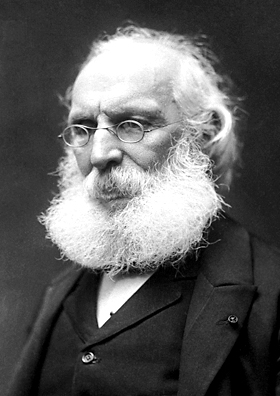












1908 - "Lay Down Your Arms," authorized English translation by T. Holmes, New York (USA). Click here for the complete text.
1908 - von Suttner speaks at the 1908 Peace Congress in London; she repeats again and again that «Europe is one» and that uniting it is the only way to prevent the world catastrophe which seems to be coming.

1912 -- Last major speaking tour was a visit to the United States.
Her last major effort, made in 1912 when she was almost seventy, was a second lecture tour in the United States, the first having followed her attending the International Peace Congress of 1904 in Boston.


August 28, 1913 - At the inauguration of the Peace Palace, von Suttner says that peace conferences, treaties & tribunals are not sufficient by themselves: "These things also require their material forms, their easliy recognisable visible symbols, their homes. War, which has dominated the world for thousands of years, is not short of monuments and palaces. Peace has just ONE monument [sic]: the statue of Christ on the Andes; and in Europe it now has for the first time ONE beautiful building: the Peace Palace... International justice between nations has moved into a splendid home. The proud building is standing now, visible, and tangible: Temple, symbol and workplace. At least the spirt of peace is no longer homeless. The effects which will radiate from this monument are incalculable as yet. Andrew Carnegie has presented the world with a gift which has cost him a few millions but which, when it fulfills its purpose, will save the world countless billions." [quoted in part from van den Dungen, Peter (2003).]
August 18-23, 1913 - XXe Congrès universel de la paix / 20th Universal Peace Congress, Ridderzaal / Hall of Knights / Salle des Comtes, The Hague (Netherlands). "Sous la haute protection de S.A.R. le prince Henri des Pays-Bas, Duc de
Mecklembourg." Attended by Bertha von Sutner [1843-1914] & Henri Mandere [1883-1959], among others. A visit to the Peace Palace (not yet formally open) is a special event on the conference programme.




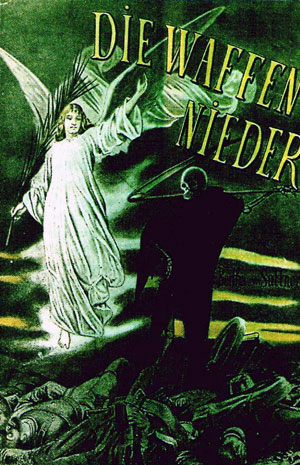





April 19, 1963 - Suttner-Gedenktafel / Suttner plaque, House 1, Zedlitzgasse 7, Vienna (Austria).
Google translation: "Today was a plaque commemorating the Austrian Nobel laureate & peace friend Bertha von Suttner reveals that lived in this building & died. The plaque also commemorates the founding of the Austrian Peace Society by Bertha von Suttner and therefore this union had borne the cost. The plaque was taken into the custody of the City of Vienna."







June 9-September, 1993 - Exhibition entitled "Bertha von Suttner and Other Women in Pursuit of Peace" at League of Nations & Historical Colletions Unit, Library of the United Nations, Geneva (Switzerland).
1993 - Exhibition entitled "Bertha von Suttner in the mirror of the contemporary press" (Bertha von Suttner im Spiegel der zeitgenossischen) at the State Library (Staatsbibliothek zu Berlin/Preussischer Kulturbesitz) in Berlin (Germany).









































